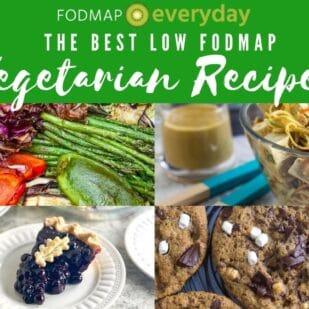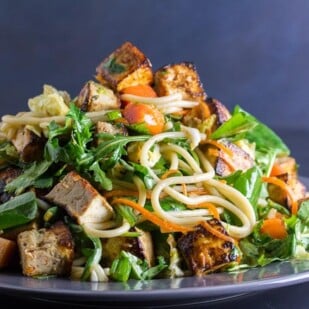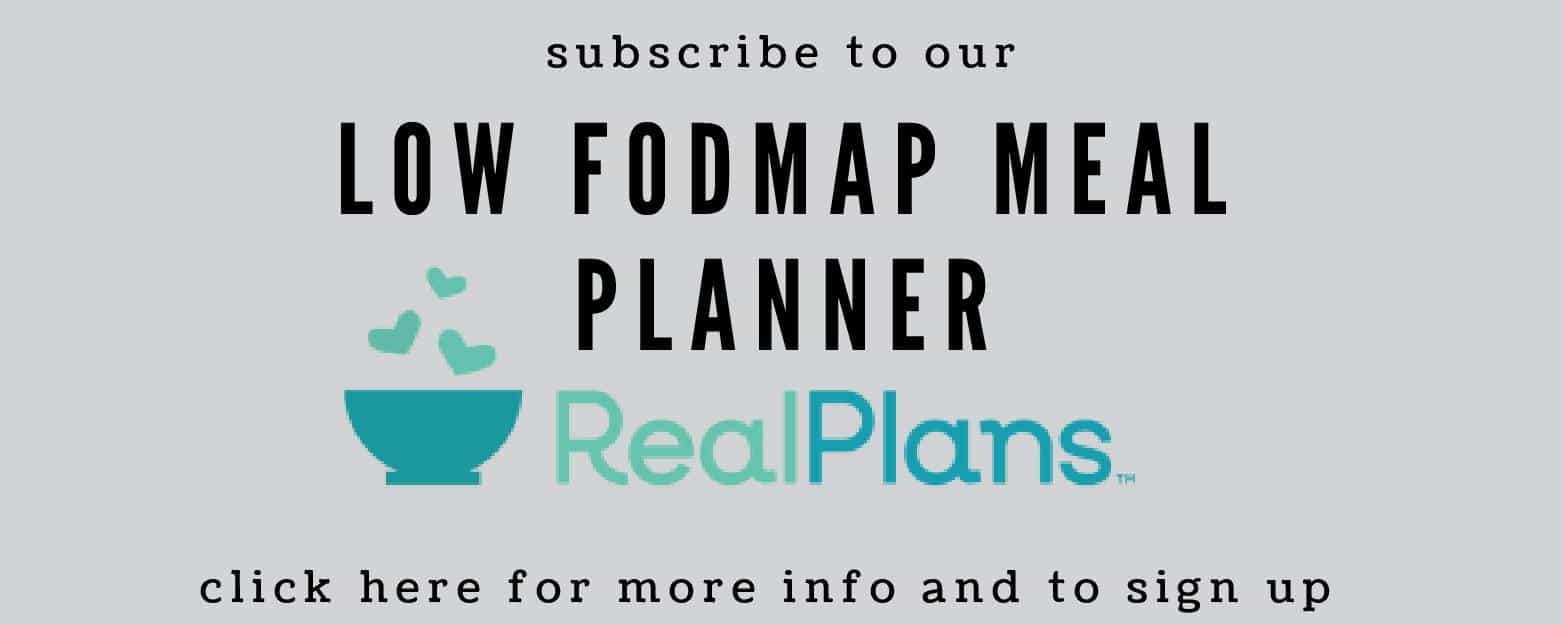Do you suffer from lactose-intolerance? Do you love cheese? (For many, that is a rhetorical question). Did you know that eating dairy-free and lactose-free are not the same thing?
Please do take a look at our article, Is Cheese Low FODMAP?, which will teach you how to tell if any cheese is low FODMAP!
Food Allergies vs. Food Intolerances
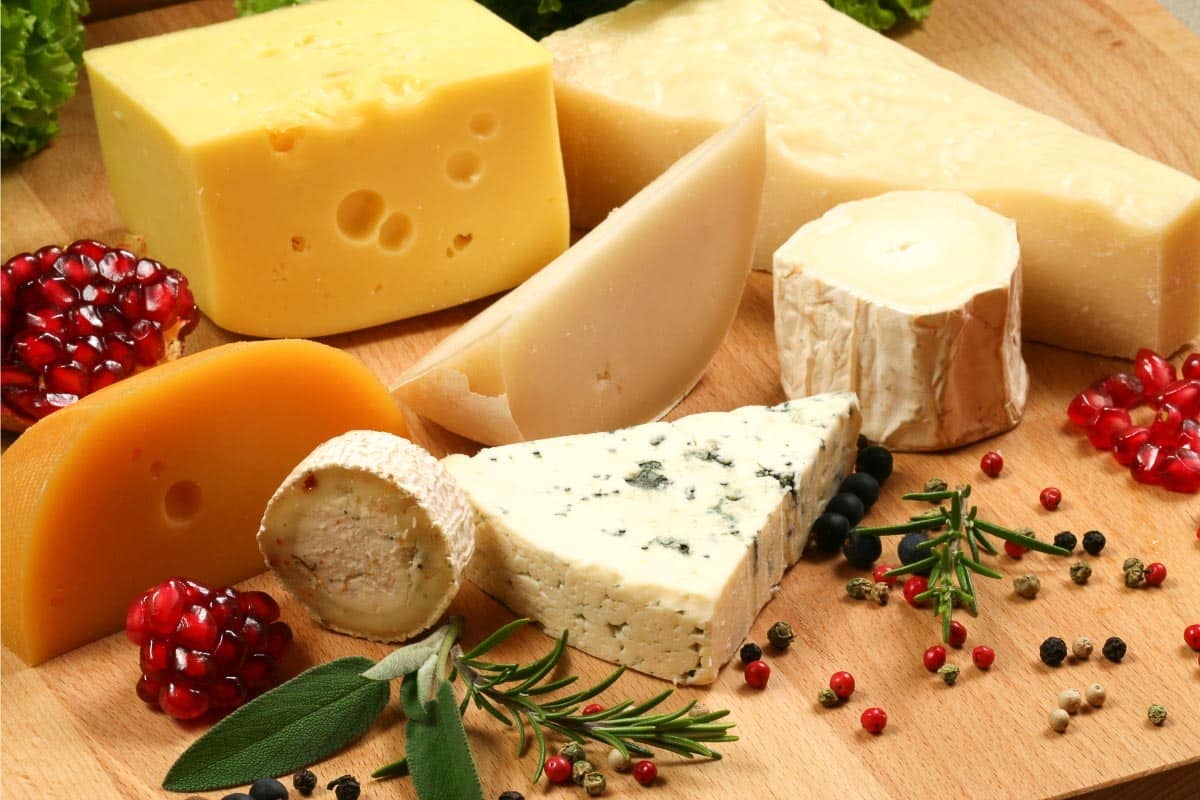
Many people who have an intolerance to lactose think that they have to eat dairy-free, but that is not true. Food intolerances and food allergies are not the same thing.
A true food allergy involves the immune system, and if one consumes the offending food, the body’s reaction can vary from mild to severe, such as anaphylaxis, which can be deadly.
With a food intolerance, there is leeway in food choices, and there are many dairy products that are considered lactose-free, or low enough in lactose to not trigger digestive upset.
Serving Sizes Count!
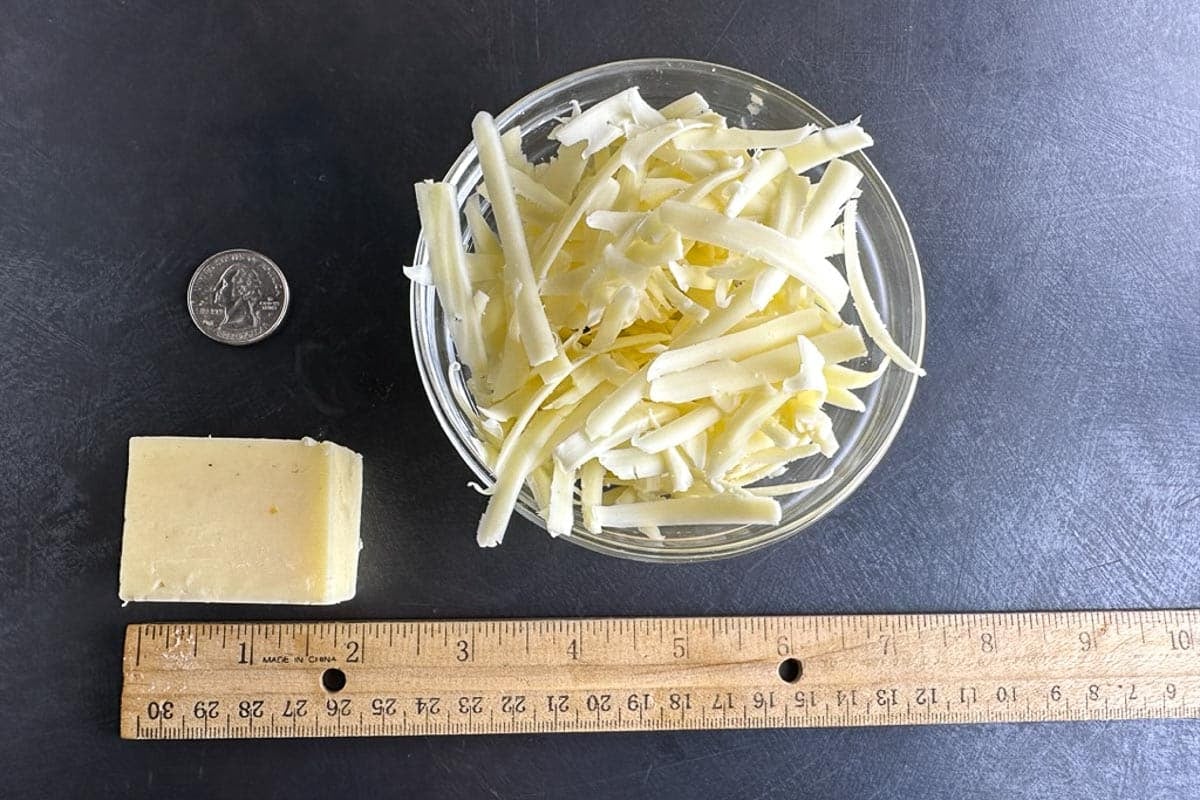
and there is 40 g of shredded cheddar in the bowl.
Serving size is important to consider. The cheeses below are assessed as lactose-intolerant appropriate in 40 g amounts.
Here is what 40 g of cheddar looks like, in a block and shredded. Other cheeses will vary a bit in their density and volume.
Expert Tips
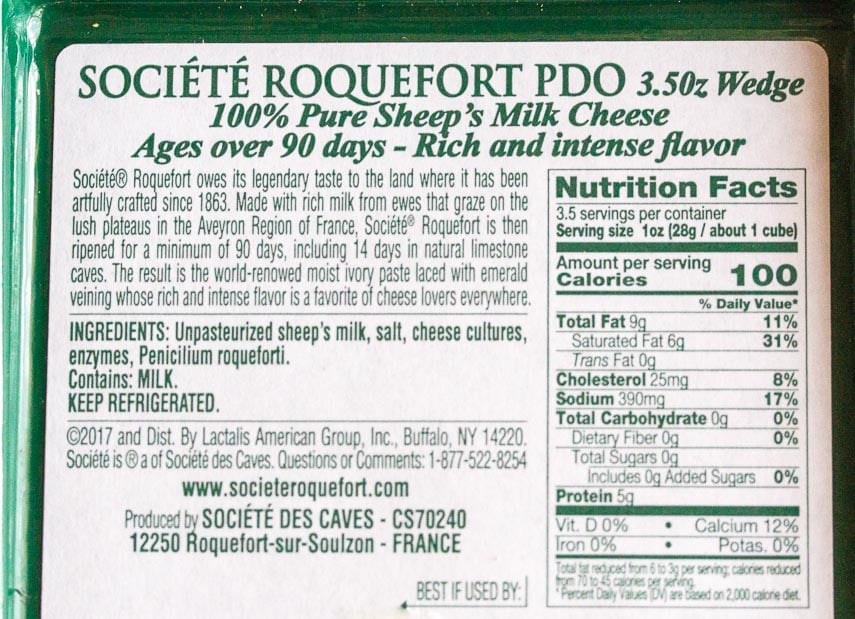
This is a lactose-free cheese
Read the nutrition label. Lactose is milk sugar, and you can see a section on the FDA Nutrition Facts Panel that says “Total Sugars”. If the amount is 1 g or less, then certain research tells us that the cheese is low enough in (or absent of) lactose and is suitable for those with lactose intolerance.
Other studies have shown that most individuals with lactose malabsorption tolerate a dose of at least 12 g lactose (corresponding to 250 mL of milk) without digestive upset. Even larger doses may be tolerated if consumed with food, or spread over the course of a whole day.
Our cheeses presented here are recommended using the more conservative approach of 1 g or less per serving.
Also, in general, naturally aged hard cheeses (like cheddar and Parmigiano Reggiano) have a lower lactose content than fresh, soft cheeses (like cream cheese or ricotta).
Here are 25 cheeses that you can enjoy without digestive upset, even if you are lactose intolerant.
#1 Cheddar
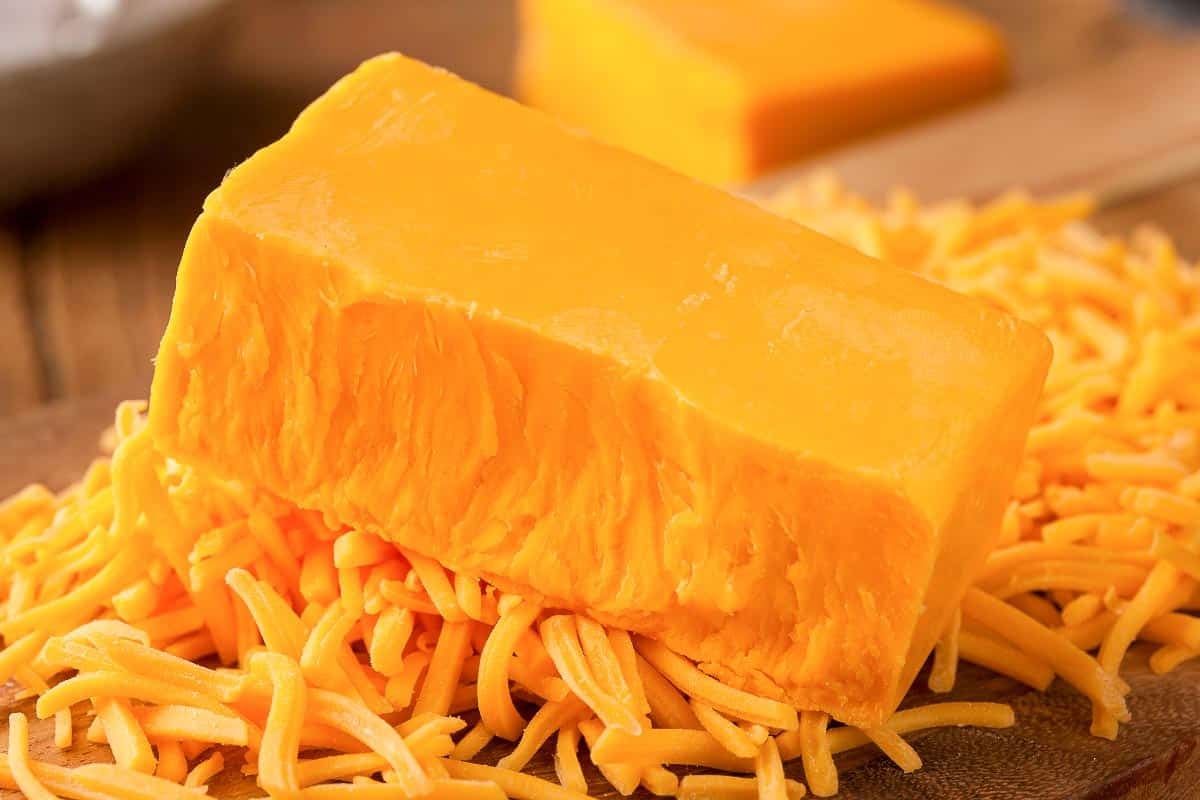
Ah, the great versatility of cheddar cheese. Mild in flavor to extra sharp; pale white to rich orange in color. Fantastic melt-ability and perfect for your next grilled cheese sandwich or mac n’ cheese. It is a cow’s milk cheese that you can enjoy, even if lactose intolerant.
#2 Mozzarella

There is something irresistible about the way mozzarella melts on a pizza, and how it goes so well with tomatoes and basil on a Caprese salad. Fresh mozzarella does have a higher lactose content than the firmer style, which is often shredded and used for pizza, but both can be enjoyed, even if you are lactose-intolerant. Read labels. Mozzarella can be made from cow’s milk or water buffalo’s milk.
#3 Brie
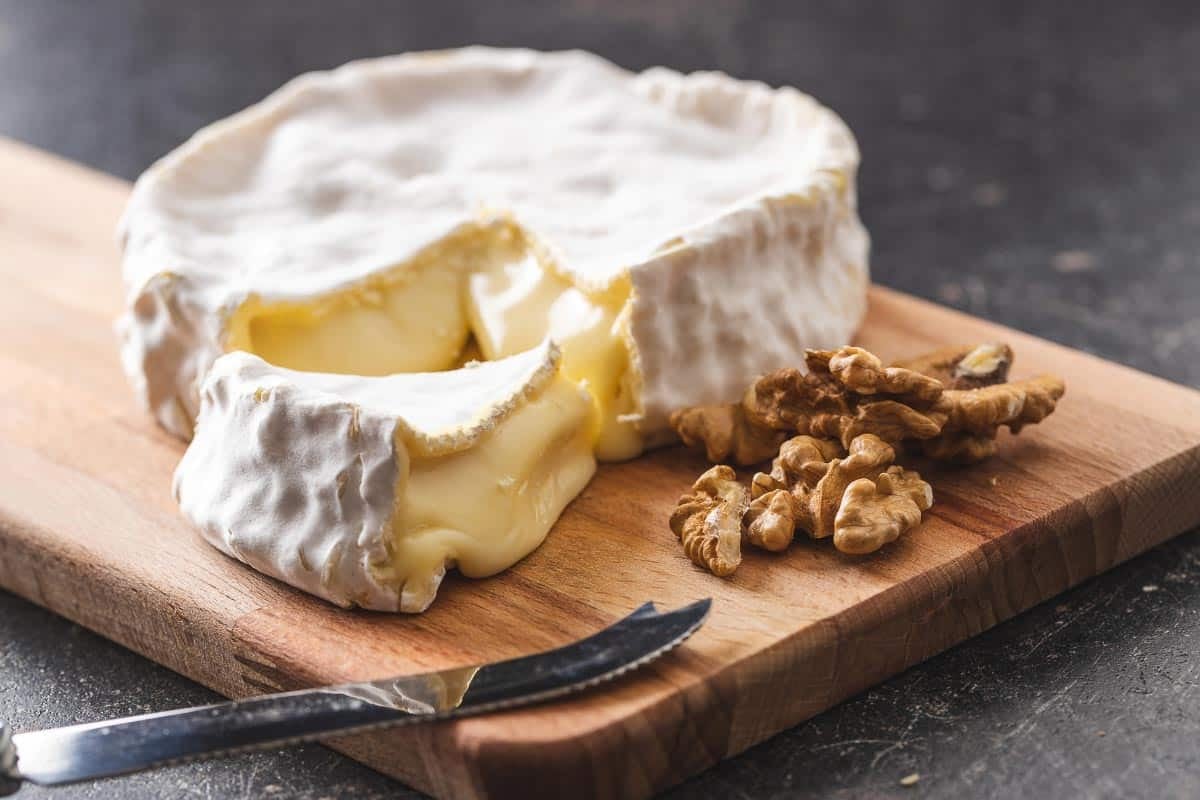
Brie-style cheese can be quite varied. Some are even flavored, or pasteurized, but here we will present the true, French brie. The Brie region, by the way, is about 40 miles east and southeast of Paris. Brie is a buttery, soft and mild cow’s milk cheese, covered with an edible, white, velvety rind and it is often said to have the aroma and flavor of mushrooms. Brie is typically enjoyed while young, being aged a mere 4 to 10 weeks. Make sure to serve brie at room temperature and when ripe; the texture will be enhanced, as will the flavor. Or, try a baked brie. We have one with Cranberries and a truly decadent Kahlua Pecan Brown Sugar Baked Brie.
#4 Parmigiano Reggiano (Parmesan)
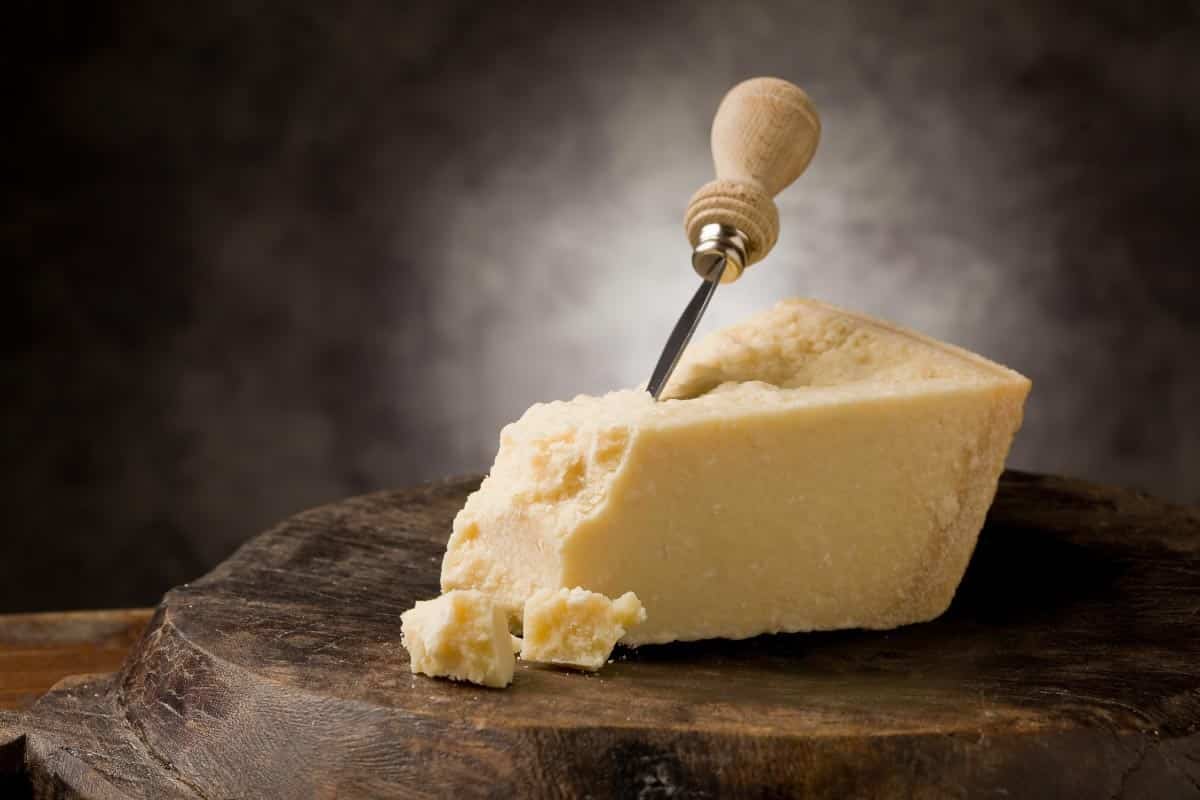
What would our lasagna, spaghetti and meatballs or Caesar salad be without Parmesan cheese, a super popular cow’s milk cheese? The proper verbiage is “Parmigiano Reggiano”, but we often call it Parmesan, or even just “Parm”. True Italian Parmigiano Reggiano will be more expensive, but we think it is worth it. A similar, lesser expensive cheese is Grana Padano. Each can be enjoyed, if lactose-intolerant.
#5 Havarti
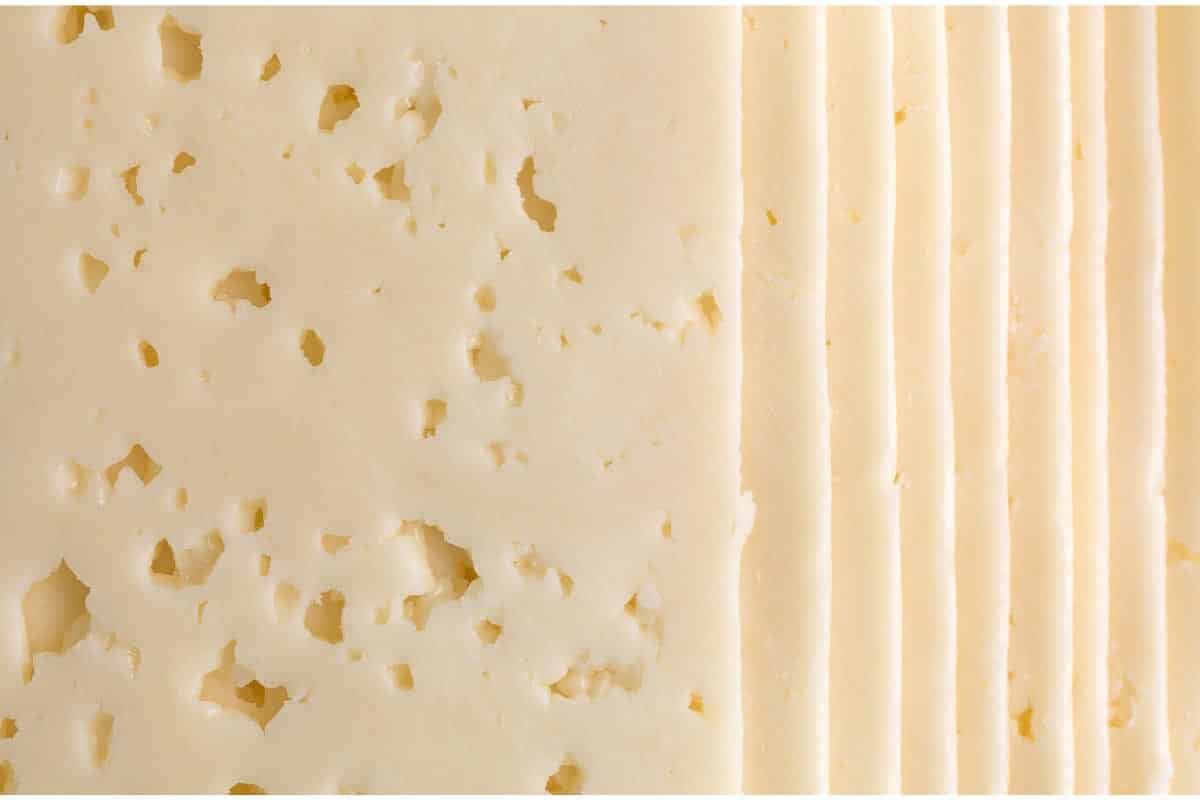
With its creamy texture, buttery flavor and slice-ability, Havarti makes a great sandwich cheese, as well as one to incorporate into recipes – or place it on the cheeseboard. It is Danish in origin and made from cow’s milk. We have a 4-cheese baked penne dish that features Havarti you really should try.
#6 Swiss
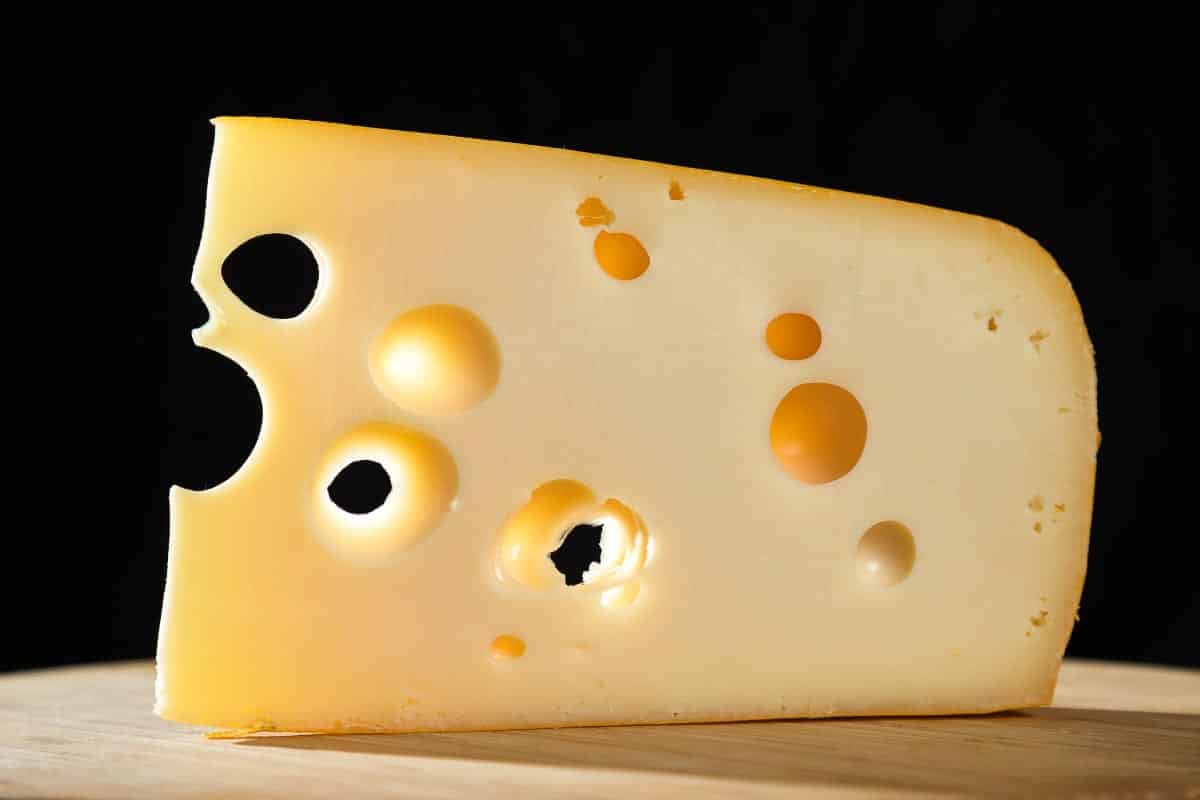
How about a turkey and Swiss sandwich? Go for it, even if you are lactose intolerant; this cow’s milk cheese is a great choice. With its distinctive pale-yellow color and abundance of holes and firm texture, it is a versatile cheese to have around. And why does Swiss cheese have holes? It is a bacteria that is used in the cheese production that creates carbon dioxide, which in term, creates bubbles in the forming cheese. The holes are also called “eyes” and when a batch is devoid of holes, cheesemakers call it a “blind” batch!
#7 American
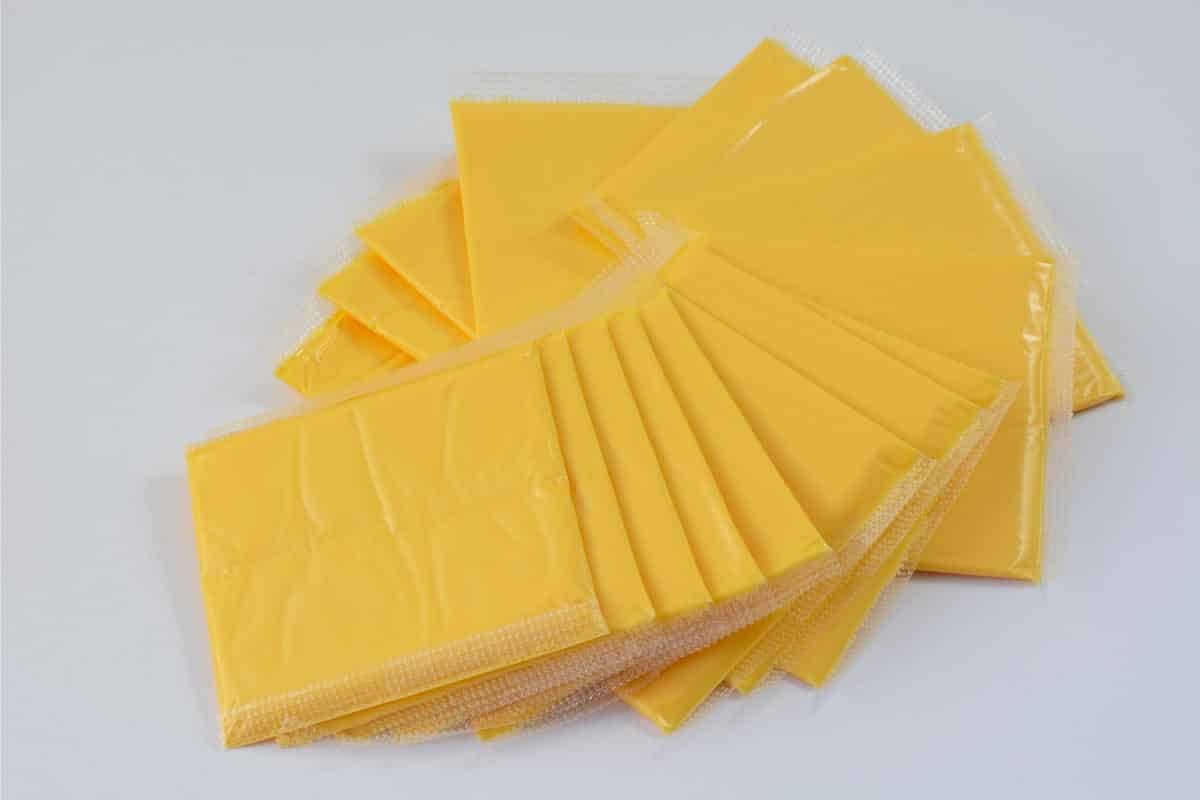
OK, let’s get something straight. Those individually plastic wrapped, orange-colored square slices that you put on hamburgers are properly called “American cheese product”, or “pasteurized processed cheese food”, because they are not a true cheese at all. The FDA defines cheese as a product that is more than 50% “cheese”, which in turn is defined as pressed curds of milk. American cheese, such as the very popular Kraft brand, contains less than this amount, so it is not formally “cheese” at all. It contains quite a bit of emulsifiers, fat, salt, preservatives, and other ingredients. As far as being lactose-free? You have to read labels; they vary. If you find one with less than 1 g per serving under “Sugar”, you could give it a try.
#8 Stilton
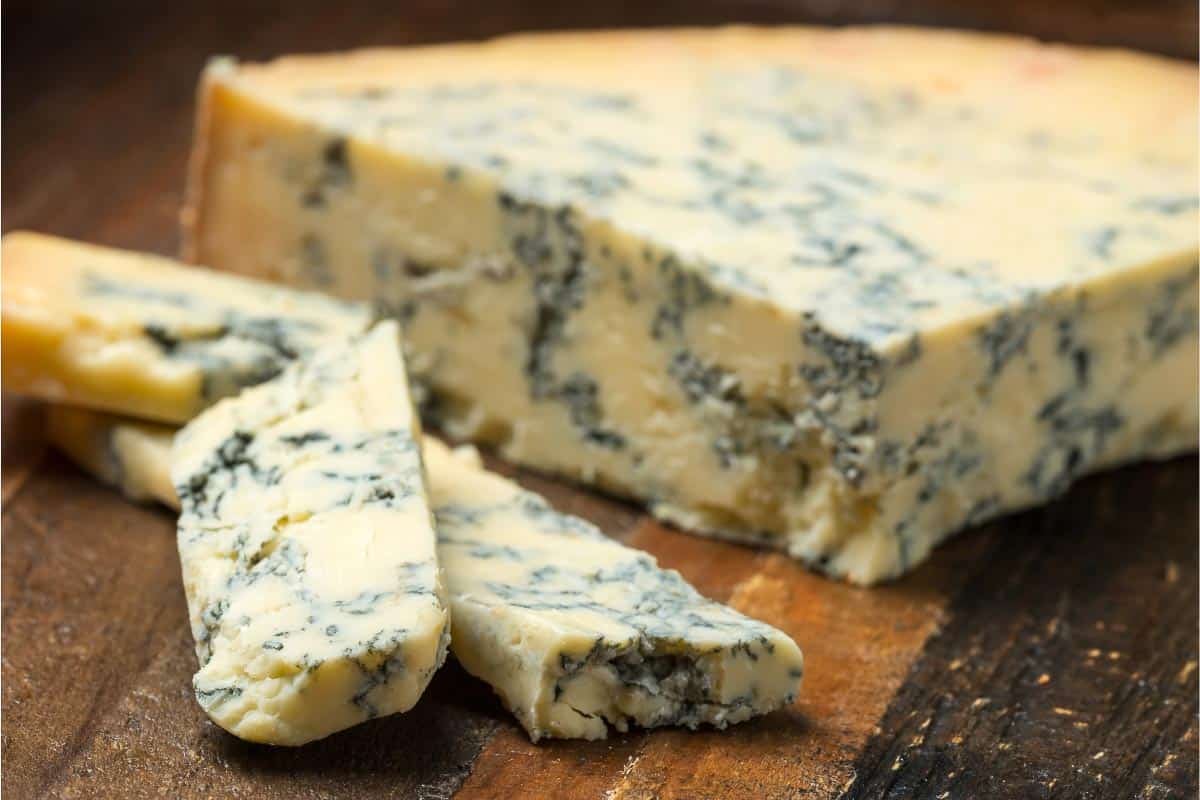
Stilton is called the King of cheese in Britain and is considered by many worldwide to be the king of blue cheeses (although many French would argue this point). Stilton is a cow’s milk cheese that hails from Leicestershire, Derbyshire, and Nottinghamshire, due to European Union Protected Designation of Origin rules. Stilton has huge aroma (some say stinky) and is creamy and moist. The flavor is salty and earthy, and can be milder than some other blue cheeses. Older Stilton will be more pungent; they are typically aged between 6 and 18 months. The blue-green veins occur naturally as it ages, encouraged by piercing with long needles during the aging process. Air then circulates and promotes bacterial growth. And yes, you can enjoy it even if you are lactose-intolerant.
#9 Camembert
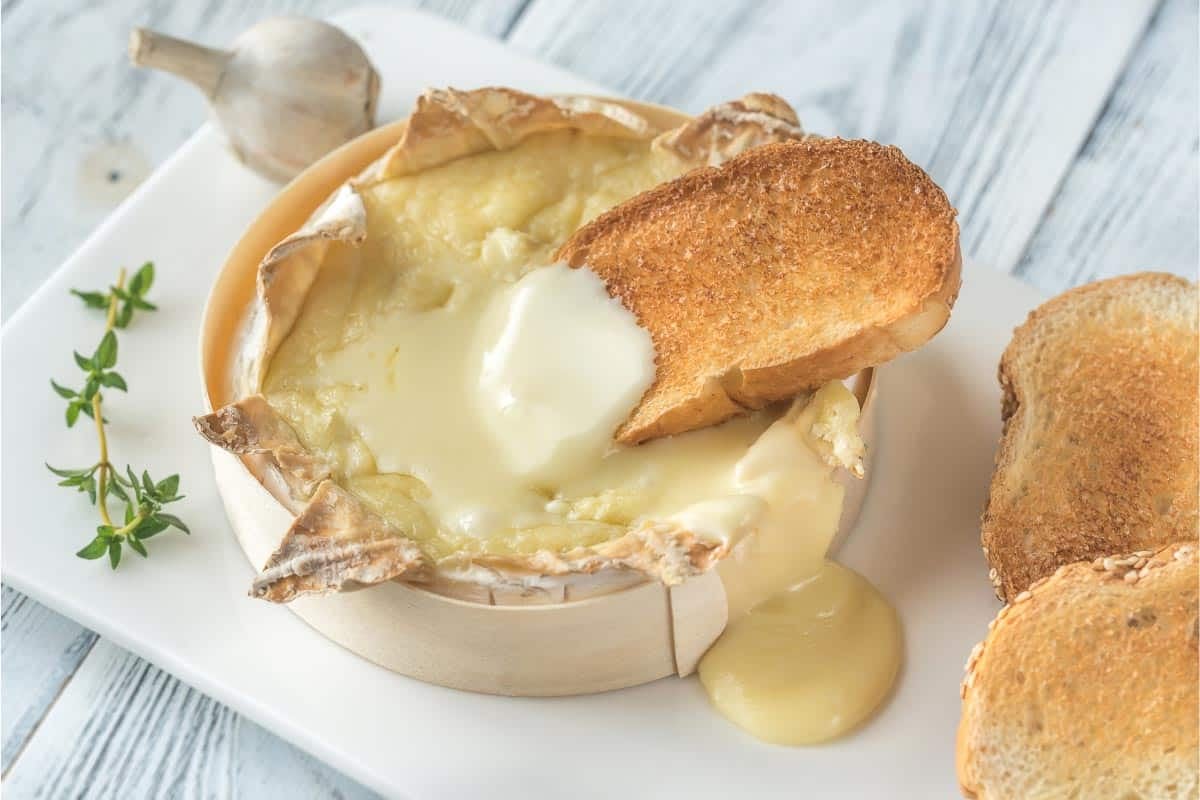
Camembert is a cow’s milk French cheese, rich in fat, creamy in texture, and buttery and mild in flavor. The soft, white rind is caused by a white fungus, called penicillium candidum, and is meant to be eaten with the cheese. As it matures it becomes runny in texture, which enhances the eating experience. You can also melt it, as shown above. Dive in and use vegetables, fruit and bread to dip.
#10 Pecorino Romano
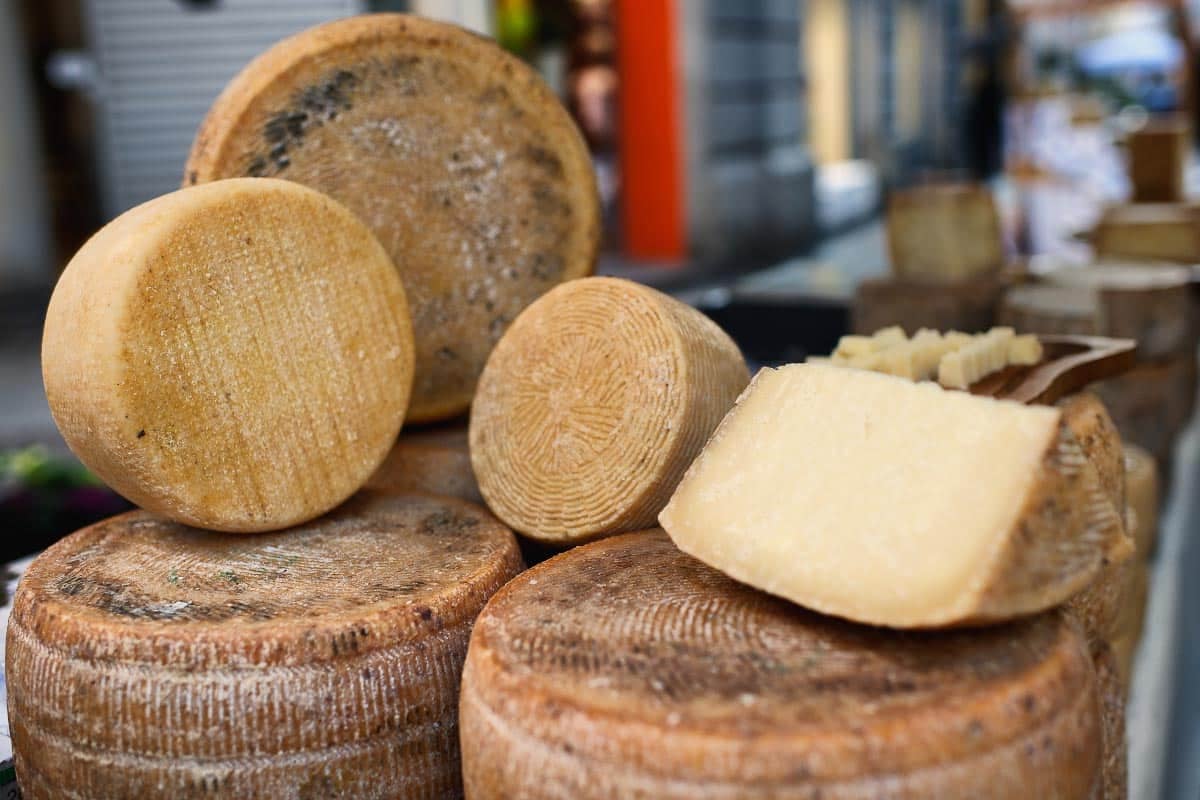
This hard Italian cheese is made from sheep’s milk. It is crumbly, flaky, and even grainy in texture, with a salty sharp flavor. It is one of the most ancient cheeses, dating back to Roman times. Pecorino Romano is a common alternative to Parmesan cheese and is equally excellent for grating over pasta dishes and casseroles.
#11 Muenster
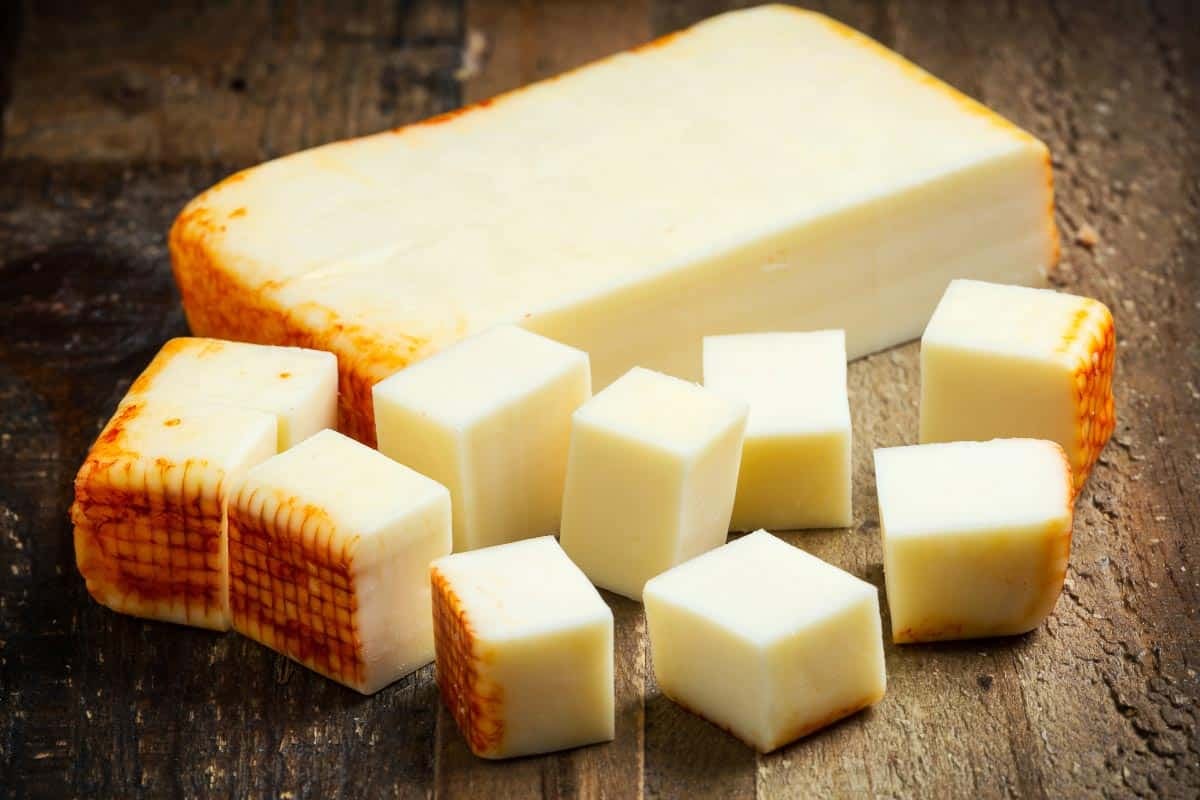
This is a soft and moist processed cheese, identifiable by its orange outer coating. It is pale yellow in color, very mild in flavor and is made from pasteurized cow’s milk. Muenster is the American imitation of the French Munster cheese, which is named after an Alsatian abbey of Munster in the Vosgian Mountains of France. Muenster has excellent melting properties; try it for grilled cheeses, burgers, baked pasta casseroles, pizza, or cubed as a snack. It is so mild that it is often a kid’s favorite.
#12 Gouda
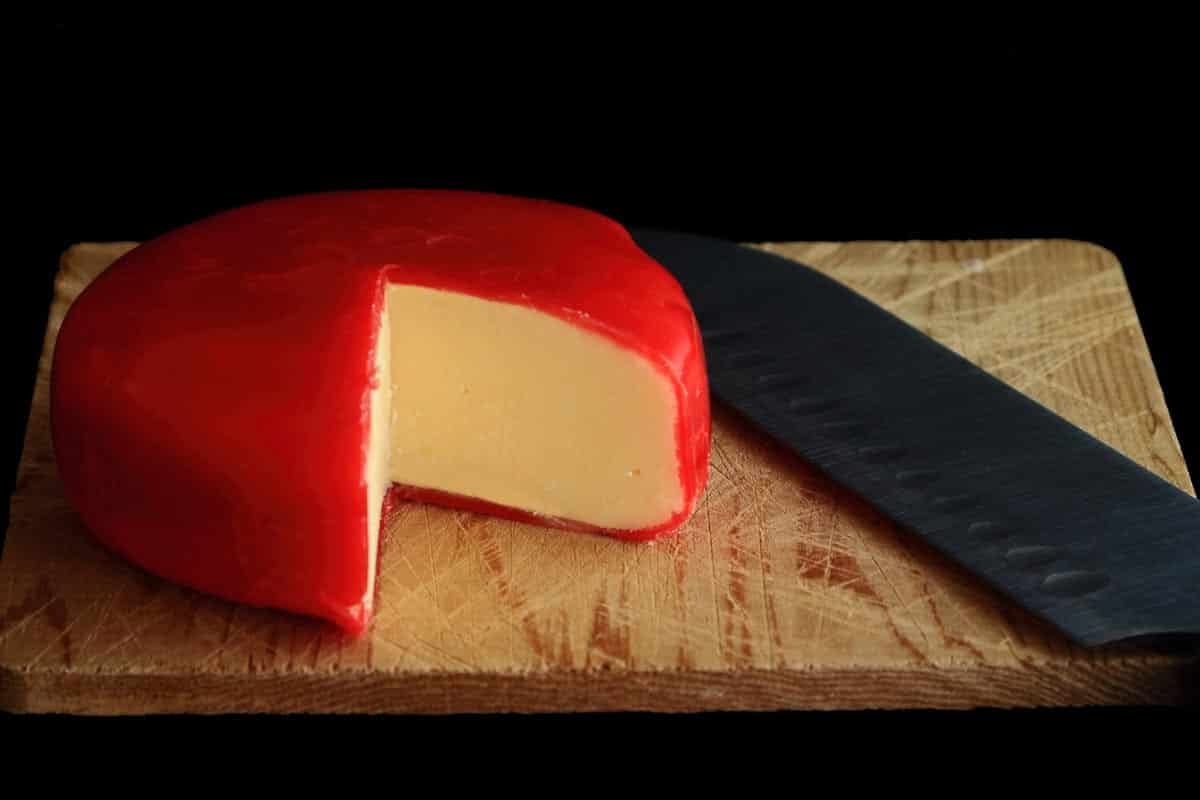
When it comes to Gouda, which hails from the Netherlands, there is regular Gouda, as well as smoked and aged. Here we are talking about simple Gouda. It has a springy, dense texture and a waxed rind, usually bright red, or even orange or yellow. Black rind signifies an aged version. Gouda is nutty and sweet with a pungent flavor. It can be made from pasteurized or unpasteurized cow, goat, or sheep milk. The most common Gouda found in supermarkets will be made from pasteurized cow’s milk. It can be grated, sliced, cubed or melted and can be part of your lactose intolerant diet.
#13 Roquefort
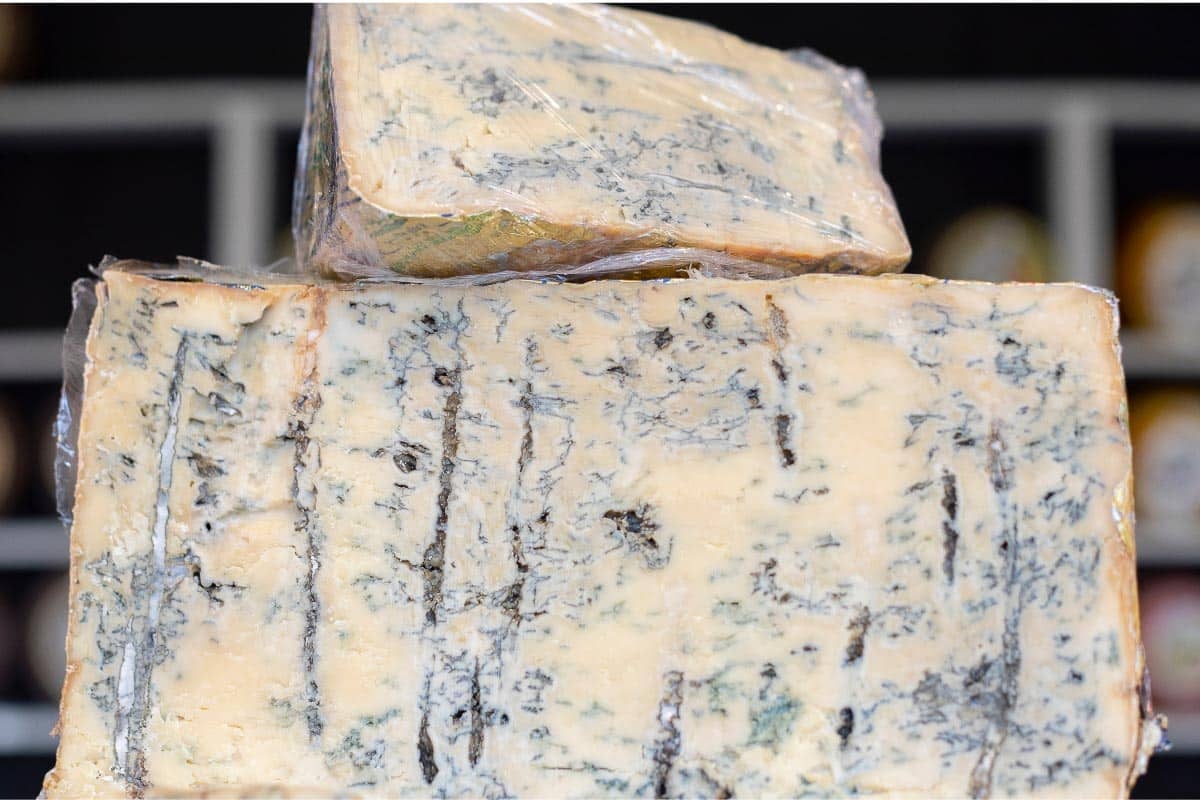
Roquefort is a French blue cheese made from unpasteurized sheep’s milk in the region surrounding Roquefort-sur-Soulzon. It is semi-soft, crumbly, with rich, blue veining. It has a salty, tangy, sharp flavor and sometimes referred to as the king of cheeses in France. It is fantastic crumbled into salads.
#14 Gruyère
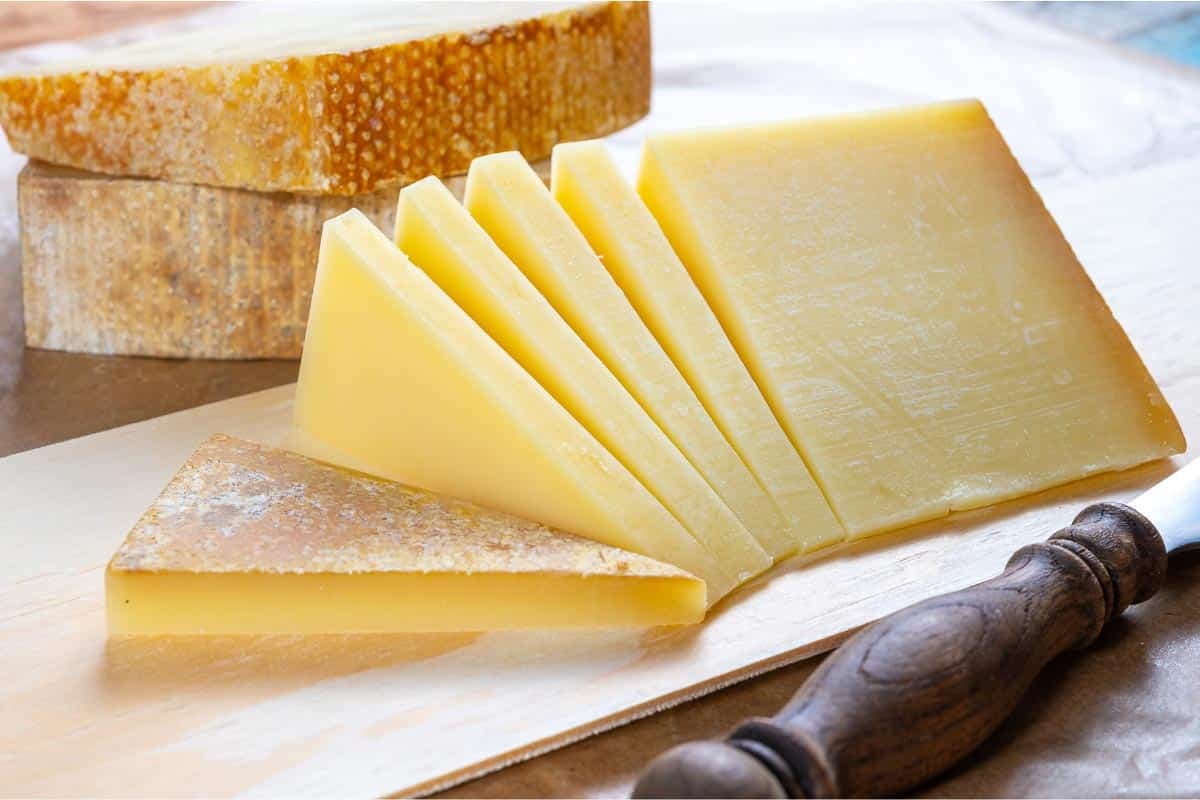
This hard Swiss cheese is made from unpasteurized cow’s milk and has a nutty, sweet flavor, with an earthy aroma, and a hard, dry rind. It can be enjoyed young, as well as more mature. Aged Gruyère will be more complex and earthy and begin to develop small cracks. We love using Gruyère anywhere you might have reached for other Swiss cheeses for its more sophisticated flavor; try this salad that also includes chicken, tomato, green beans and basil.
#15 Gorgonzola
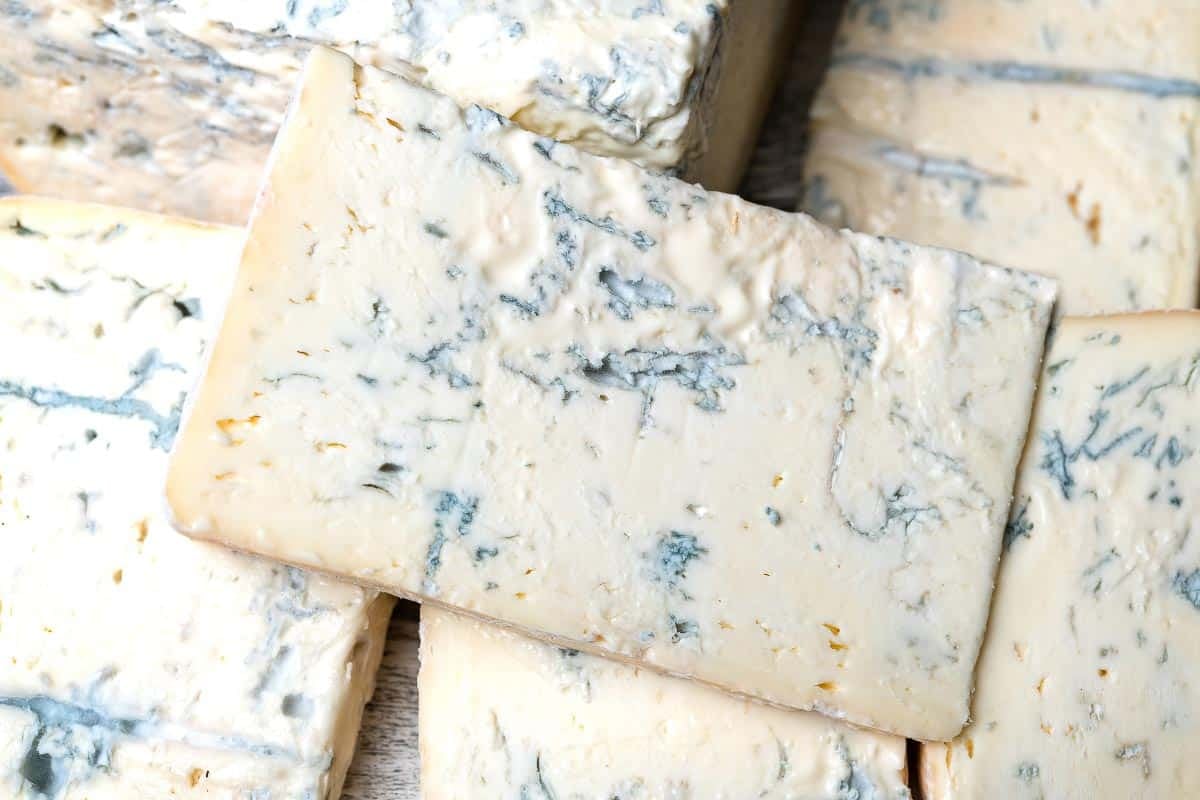
Gorgonzola is an Italian cow’s milk cheese made from pasteurized milk. It is a soft, blue-veined cheese, with a firm yet crumbly texture. The flavor can range from mild to sharp, depending on its age. Set it out on your next cheese board, or use in recipes, such as this quick-to-make pasta dish.
#16 Edam
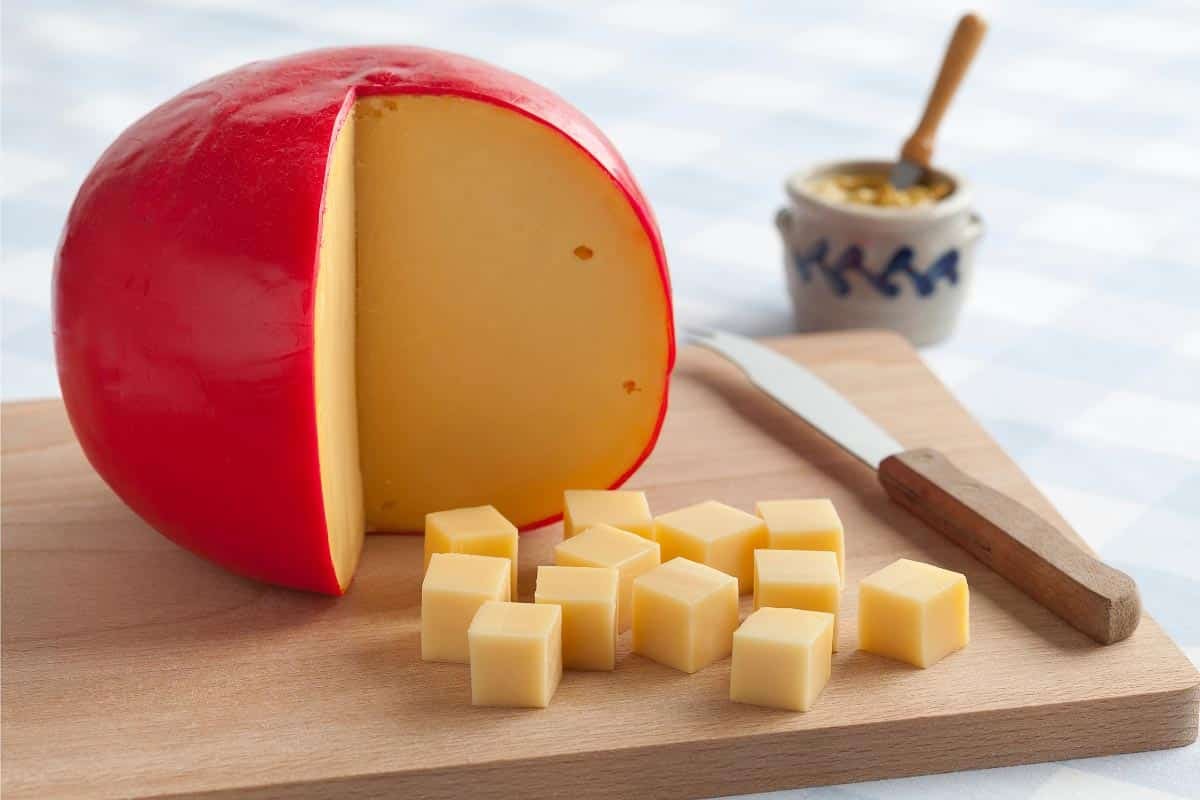
Edam hails from the Netherlands and can be made from cow’s or goat’s milk. It is a semi-hard, golden yellow cheese with a compact texture and mild, nutty, salty flavor. It comes in young and aged varieties and is considered low in fat content compared to other cheeses. You can slice or cube it, and it makes a great snacking cheese with fruit.
#17 Goat Cheese
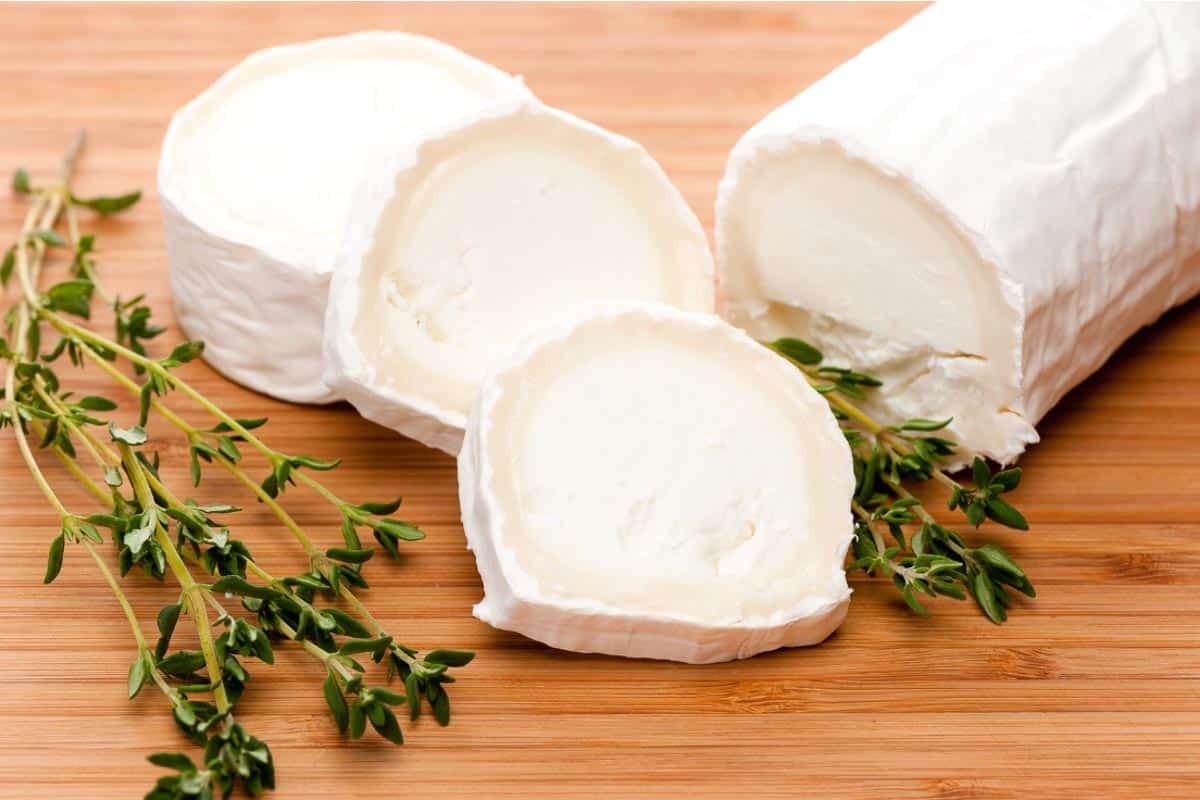
Goat cheeses come in moist, young varieties, hard aged varieties, and everything in-between. They are, of course, all made from goat’s milk. The younger are milder; the aged can be quite tangy and pungent. If you see the term “chevre”, that is simply the French word for goat cheese. Feta can be made from goat’s milk, as can Edam, among other cheeses. Some popular French chevre include Valencay, Tommes, and Selles sur Cher. In the US you might see Montrachet logs. Check labels, as the lactose content can vary, but many can be enjoyed while eating low lactose. We happen to love these olive oil muffins with goat cheese, walnuts and raspberries.
#18 Colby

Colby hails from the US and is an easy-to-find supermarket cheese. In the image above, the solid orange Colby is on the right and also forms some of the cubes. The marbled looking cheese is a Colby Jack – it is part Monterey jack – and can be low lactose as well.
Colby is a rindless cow’s milk cheese, is a deep orange color, has a semi-hard, yet springy texture, and is often confused with cheddar; compared to cheddar it is milder. Similarly, it melts well and is great on sandwiches, melted or not, on burgers, and used in cooking.
#19 Asiago
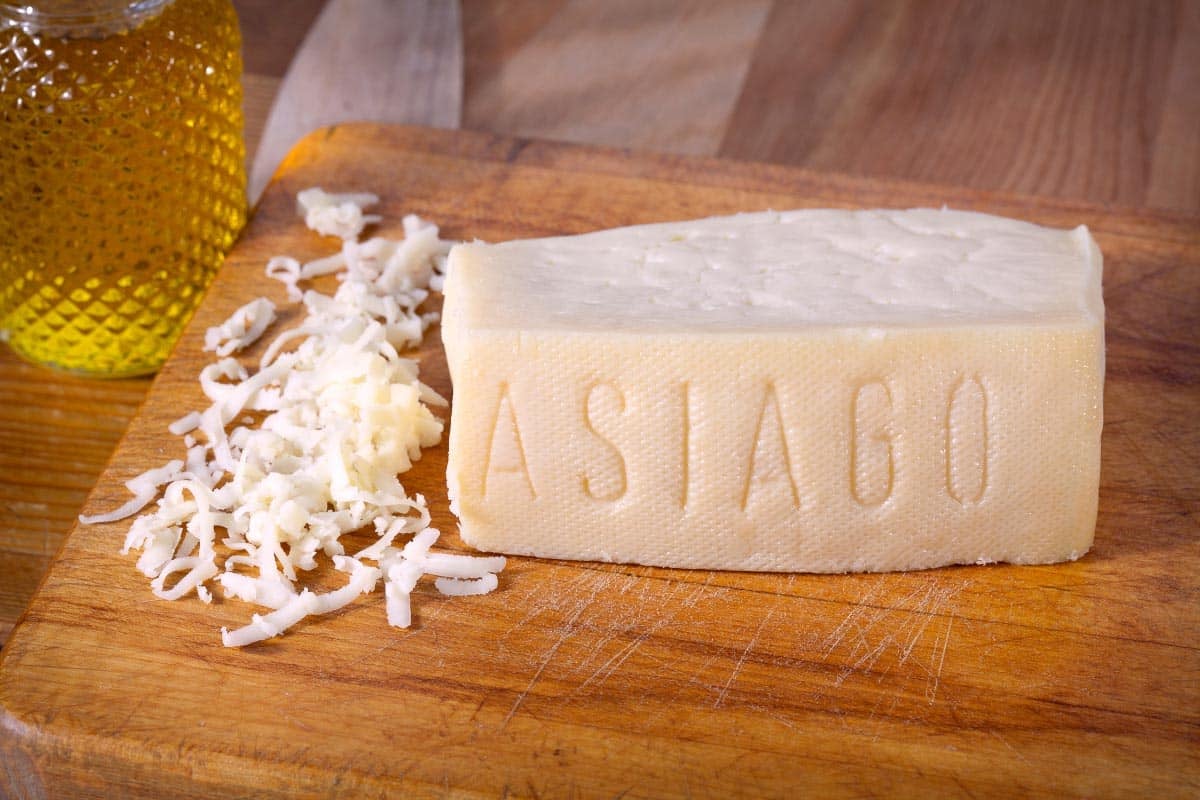
Asiago DOP (protected designation of origin) is produced only on the Asiago plateau in the Veneto foothills in Italy. Traditionally, it was made from sheep’s milk, but today it is produced from unpasteurized cow’s milk. It can be enjoyed young as well as aged and the texture and flavor will differ, depending.
Like many cheeses it becomes firmer and more pungent as it ages. It ranges from pale yellow to a darker yellow in color, and has a milky flavor, ranging from mild to sharp. The aroma can be pungent. Try it grated over pasta, soup, or salad.
#20 Fontina
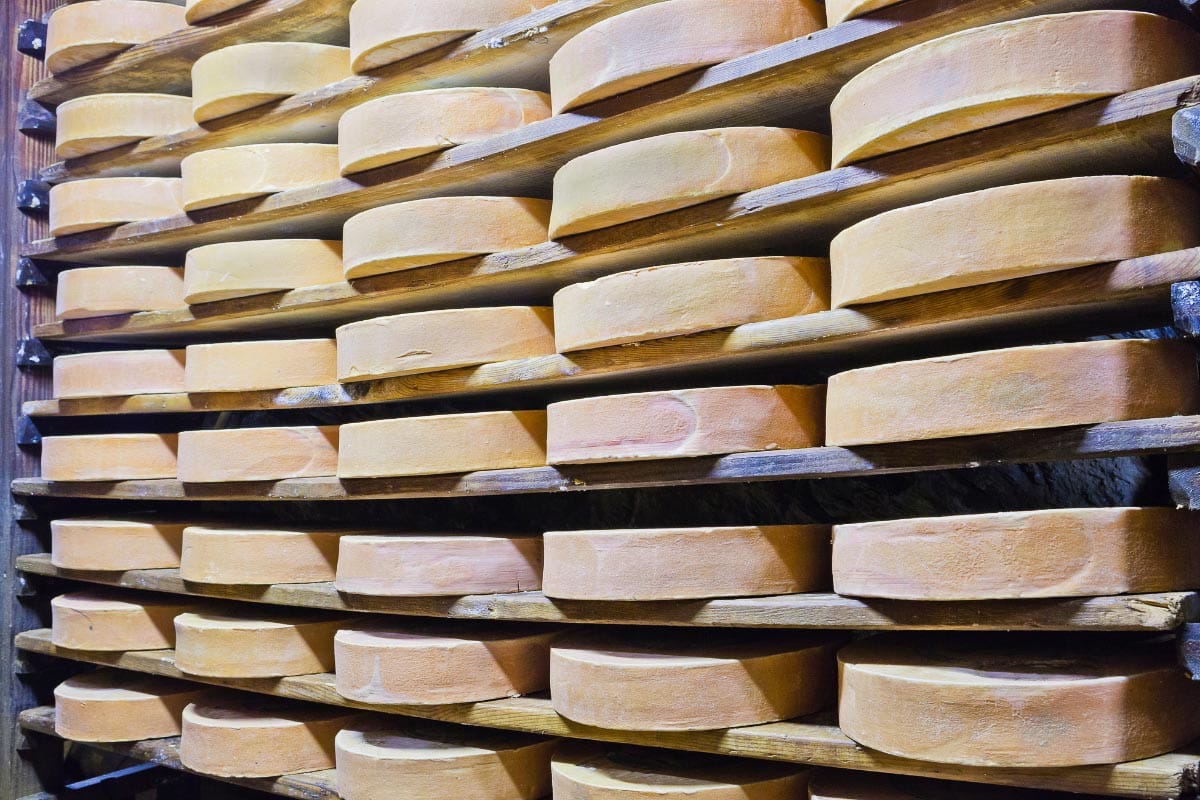
Fontina can be Italian or Danish in origin, with the Italian pre-dating the other. The Italian version is made from unpasteurized cow’s milk and more properly called Fontina Val D’Aosta. It has a washed rind, is semi-soft, with a creamy, supple yet dense texture and mild, nutty flavor that can veer into strong and tangy upon aging. The Danish version is made from pasteurized cow’s milk and encased in red wax. It has a semi-firm texture and is creamy and mild. Try the Italian version for fondue! The Danish version makes a great snacking or sandwich cheese.
#21 Paneer
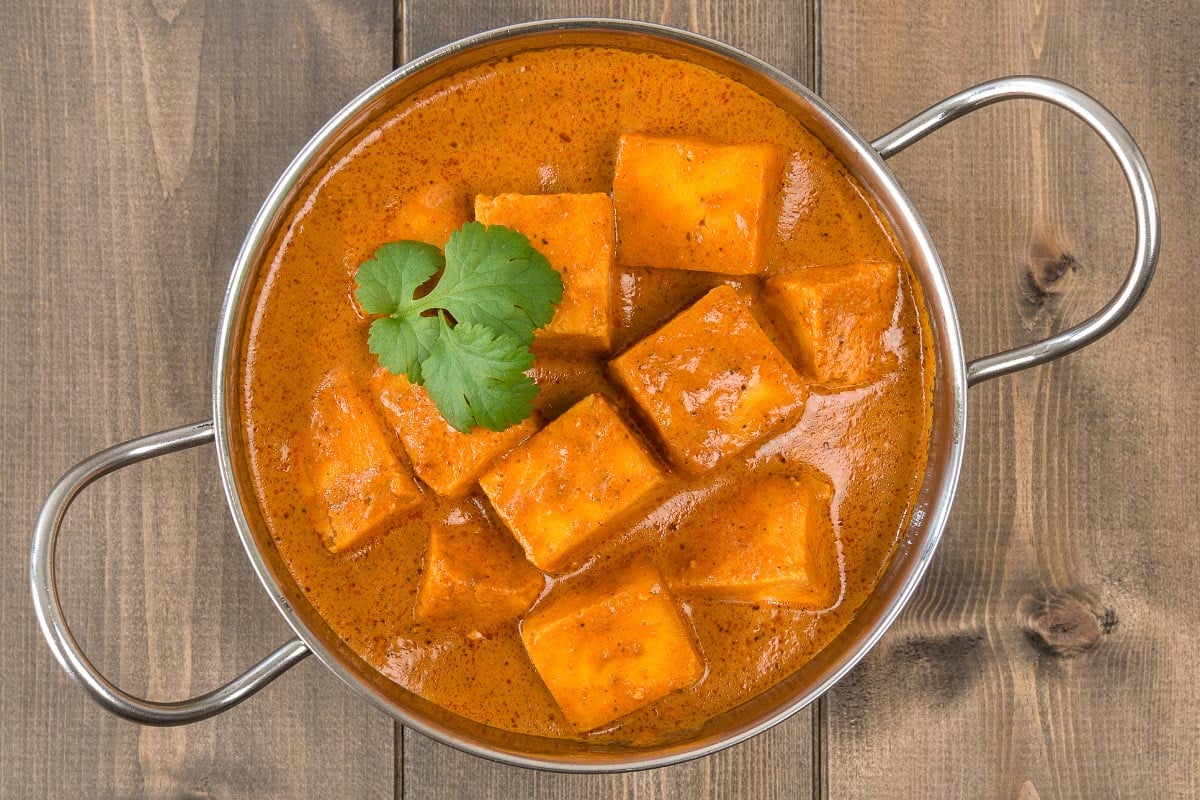
Paneer is a rindless Indian cheese that can be made from cow or water buffalo milk. It is white in color with a fresh, mild, milky aroma and flavor. The texture is firm and crumbly. It is often used in cooking and incorporated into dishes in cubed form, such as in gravies and curries. Check labels as the lactose content can vary.
#22 Taleggio
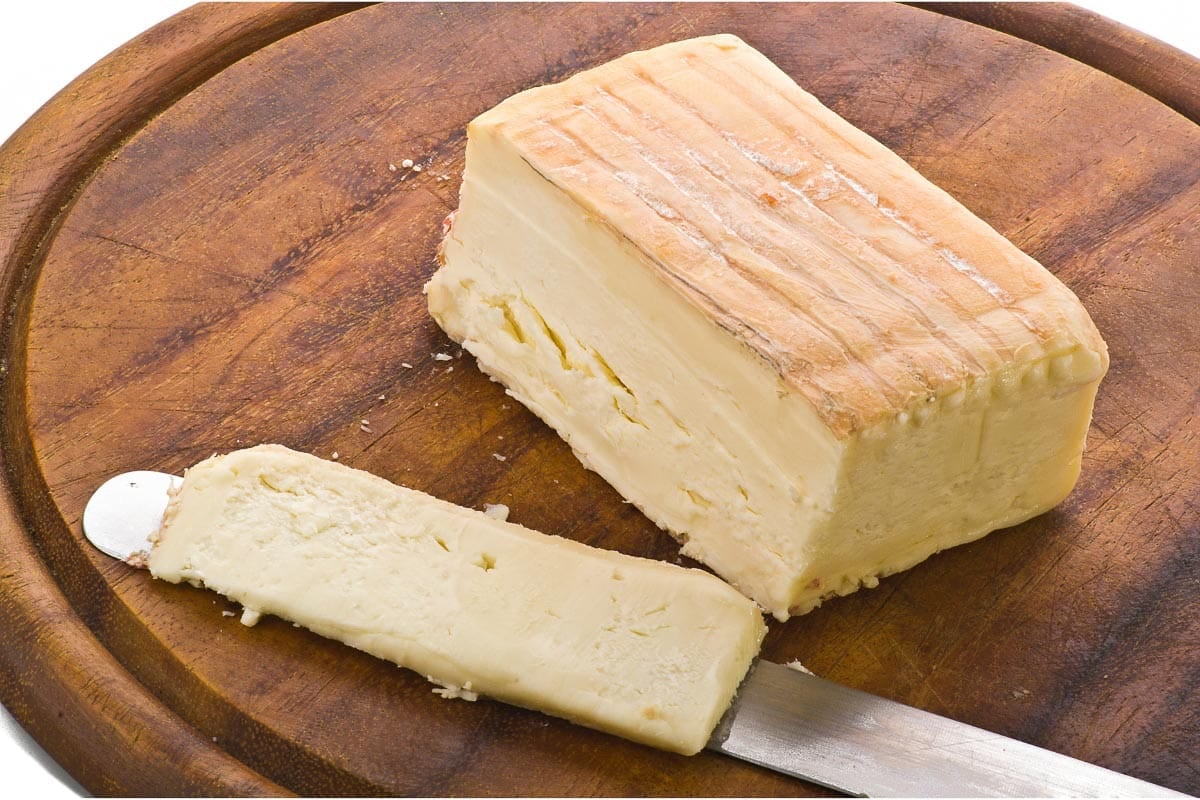
This Italian cheese can be made from pasteurized or unpasteurized cow’s milk. It is pale yellow in color, and fruity in flavor, ranging from mild to tangy depending on age. It has a washed rind, a pungent aroma, and a semi-soft texture. The smell is much more potent than its taste! Try over risotto or polenta.
#23 Halloumi
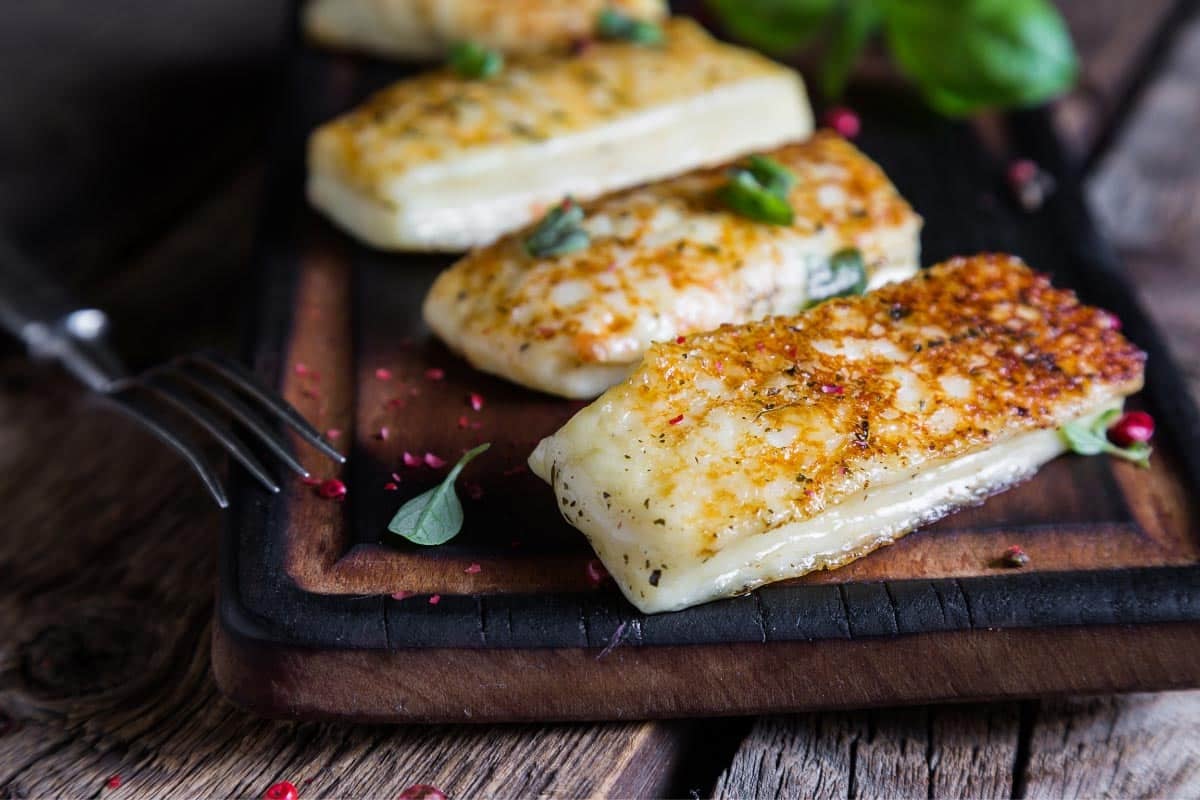
Halloumi hails from Cyprus and can be made from pasteurized or unpasteurized cow’s, goat’s, or sheep’s milk – and often a combination of goat’s and sheep’s milk. It is rindless has a chewy texture, is semi-soft and brined. The flavor is salty and savory. While it can be eaten as is, try it grilled or pan-fried for a unique experience; this salad with cold melon and warm, grilled Halloumi makes a very special starter or side dish. Check labels as lactose-content can vary.
#24 Manchego
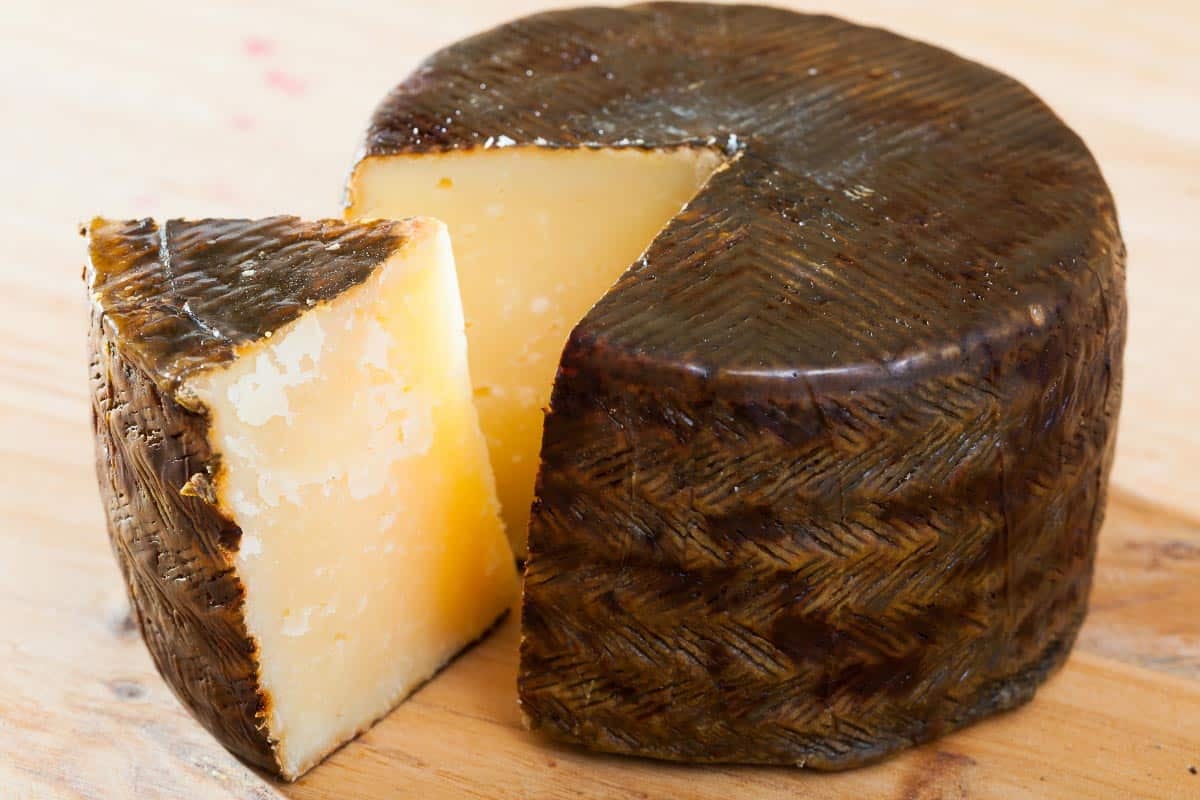
Manchego is a Spanish sheep’s milk cheese with a firm and supple texture. The rind is waxed, the cheese color is pale to medium yellow, and it can be enjoyed young or aged. The flavor becomes more pungent as it ages and the texture becomes firmer. It can range in age from 2 weeks old to over 2 years. The traditional use of grass molds leaves the distinctive zigzag pattern on the rind. Try offering Manchego on your next cheese board – or use for an extra-special grilled cheese sandwich.
#25 Feta
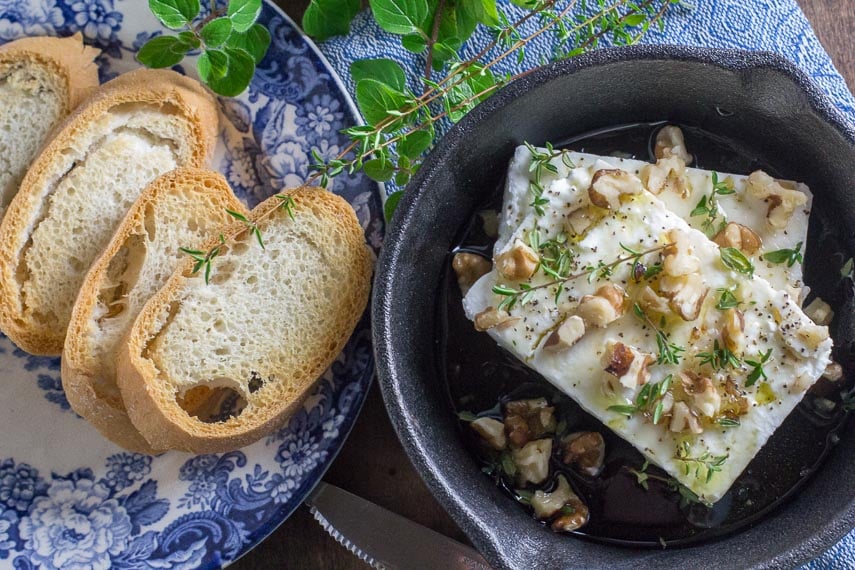
There are so many kinds of feta! Traditionally, in Greece, it is made from pasteurized or unpasteurized goat’s or sheep’s milk – or a combination of both. In the US, it is often made from cow’s milk. It is a soft, brined cheese, with a low-fat content and can range in texture from dry and crumbly, to moist and creamy. It is white in color and can come packaged in brine or not, the latter usually being the US cow’s milk version. It is typically salty and tangy, with some versions much saltier than others. We love feta crumbled into salads (check out this kale and quinoa one) baked, as shown above, and try it in Spanakopita.
Fabulous Cheese Board

These cheeses can be part of a lowered lactose diet.
By the way, if you want to make a fabulous cheese board, we have the article for you; get creative!
36 Dishes You Didn’t Know You Could Make With Rice Noodles

Rice noodles are naturally gluten-free, but that isn’t the only reason to cook with them. They are delicious unto themselves, come in a variety of shapes, and are the noodle of choice in so many Asian-inspired recipes. But it doesn’t stop there! There are rice-based lasagna noodles, shells, manicotti, elbows…From soups to main dishes, casseroles, salads and summer rolls, we have 36 recipes for you to get you slurping with joy. Click for 36 Dishes You Didn’t Know You Could Make With Rice Noodles
30 Quick & Easy Recipes For A Happy Gut: Low FODMAP and Flavor Packed
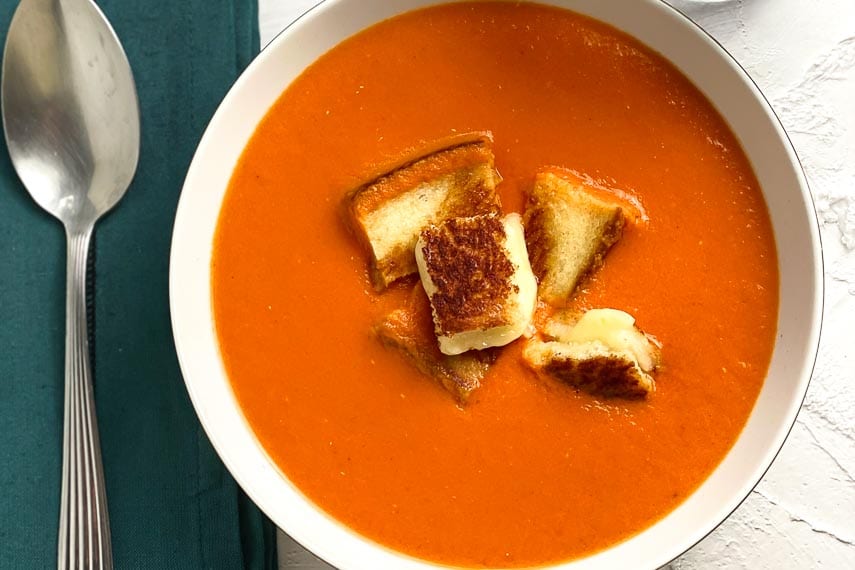
At FODMAP Everyday® we define “Quick” as a dish that can be on the table, ready to eat, in 30 minutes or less. “Easy” recipes have 15 minutes or less of prep time. All of these recipes are low FODMAP and free of gluten so they can be served to tender tummies too! Click for 30 Quick & Easy Recipes For A Happy Gut: Low FODMAP and Flavor Packed
Grab A Rotisserie Chicken On Your Way Home And Make Any Of These 18 Delicious Meals In Minutes
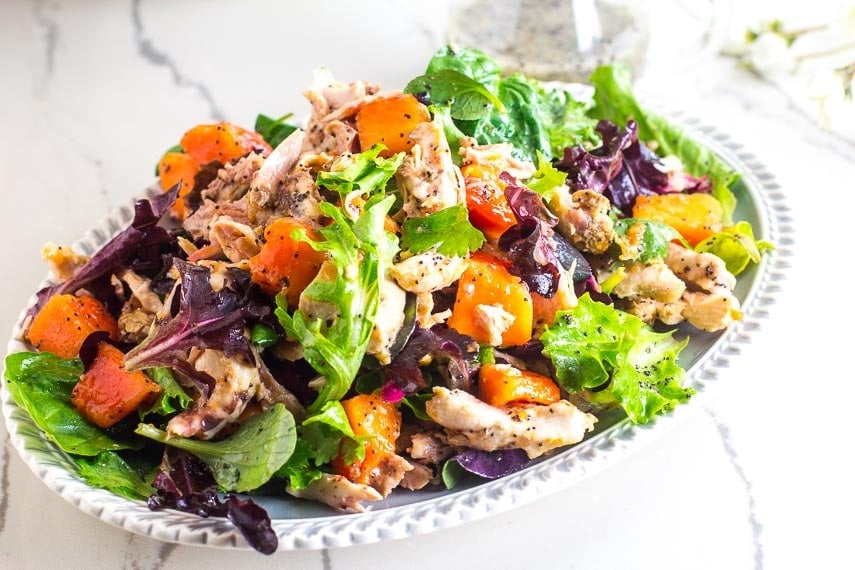
Grabbing a rotisserie chicken at the supermarket is not “cheating” by any stretch of the imagination. Having cooked chicken ready to use is a great jump-start to all sorts of creative recipes – from salads to main dishes, lunches and dinners – and is a brilliant move, in our book. Click for Grab A Rotisserie Chicken On Your Way Home And Make Any Of These 18 Delicious Meals In Minutes
Easy and Tasty: 34 Sides to Serve with Rotisserie Chicken for a Stress-Free Meal
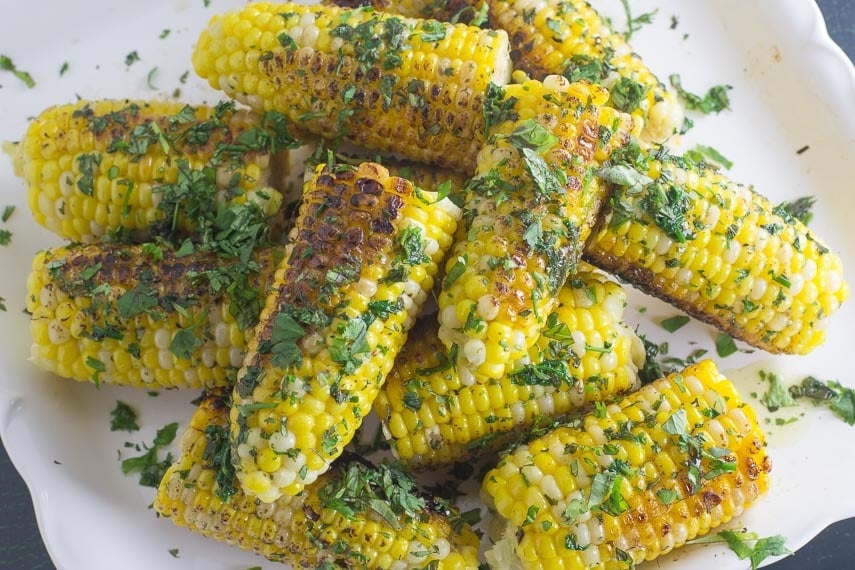
We buy a rotisserie chicken every week – and enjoy the bounty for days. But we like to mix it up; potatoes, veggies (hot and cold), pasta – there are many ways to enjoy that chicken and to turn it into a meal. Here are our 34 community favorites. Click here for Easy and Tasty: 34 Sides to Serve with Rotisserie Chicken for a Stress-Free Meal
9 Insanely Delicious Easy Homemade Chicken Wing Recipes
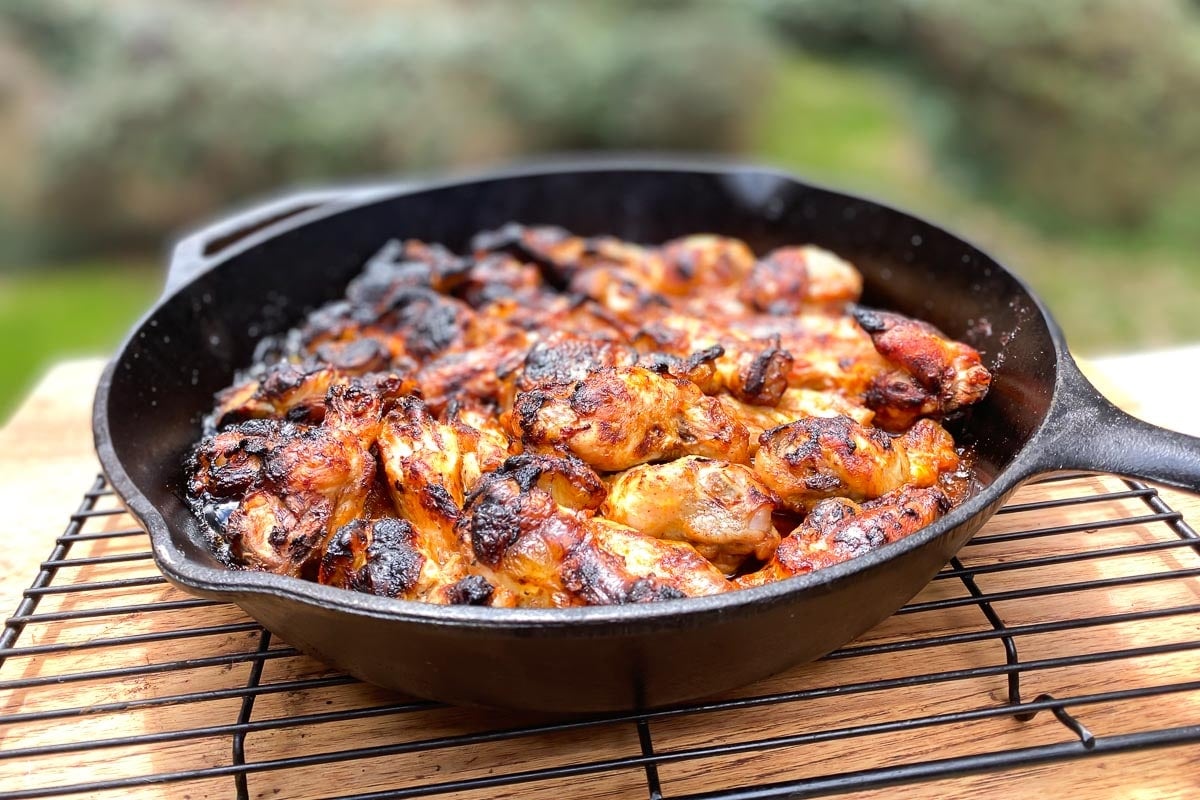
Entire restaurants build their menu around chicken wings, but we’re going to show you how to make the best chicken wings at home – and they’re easier than you think. Most of these recipes are baked, not fried, so you will not only save on calories, but also have less mess and spend less time in the kitchen. Click here for 9 Insanely Delicious Easy Homemade Chicken Wing Recipes
18 Iced Tea & Refreshing Drink Recipes That Will Make You Scream Summer Is Here!
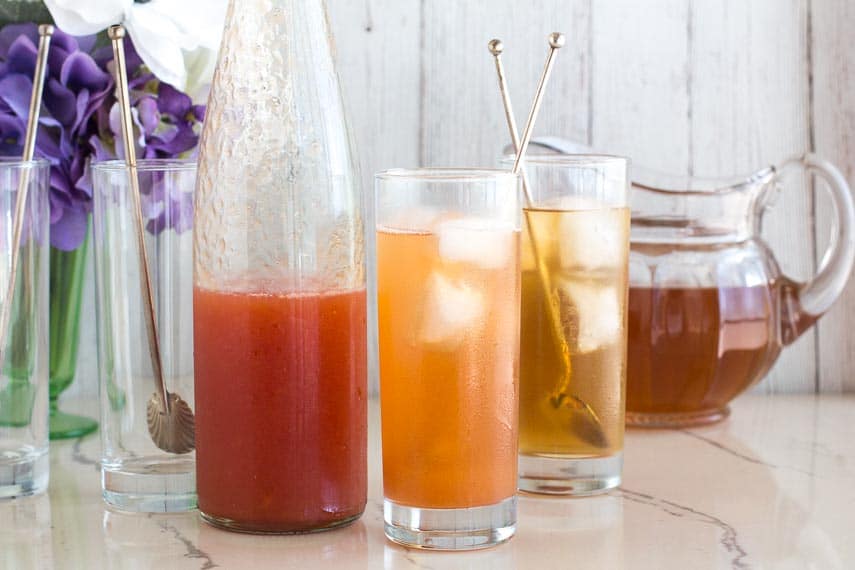
Quench your thirst and beat the heat with a refreshing lineup of tantalizing beverages. Whether you’re craving a tall, chilled drink on a scorching day, in need of hydration after a workout, or seeking a delightful mocktail sans alcohol, we’ve got you covered. Get ready to dive into a world of iced teas, invigorating punches, flavored lemonades, zesty limeades, luscious smoothies, sparkling spritzers, and even a homemade electrolyte beverage. Click for 18 Iced Tea & Refreshing Drink Recipes That Will Make You Scream Summer Is Here!
23 Dinner Solutions: Quick and Delicious Soup and Stew Recipes
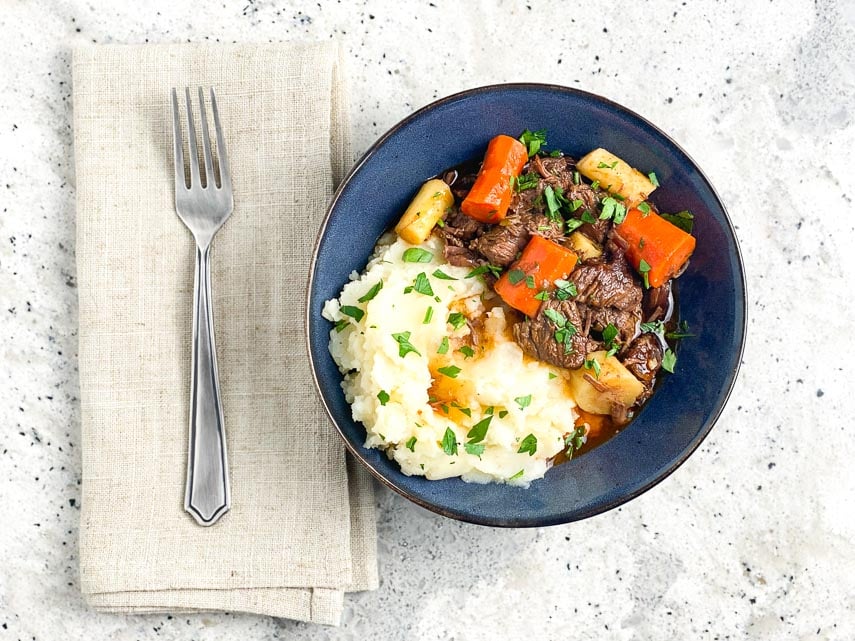
There is nothing like homemade soup or a hearty stew, especially when it is cold outside! (For you hot weather folks, we do have a few cold soups). We’ve got 23 recipes for you, from Instant Pot quickies to long simmered renditions. Comfort food in a bowl. Get 23 Dinner Solutions: Quick and Delicious Soup and Stew Recipes here.
23 Easy Potato Recipes: Which One Will You Try First?
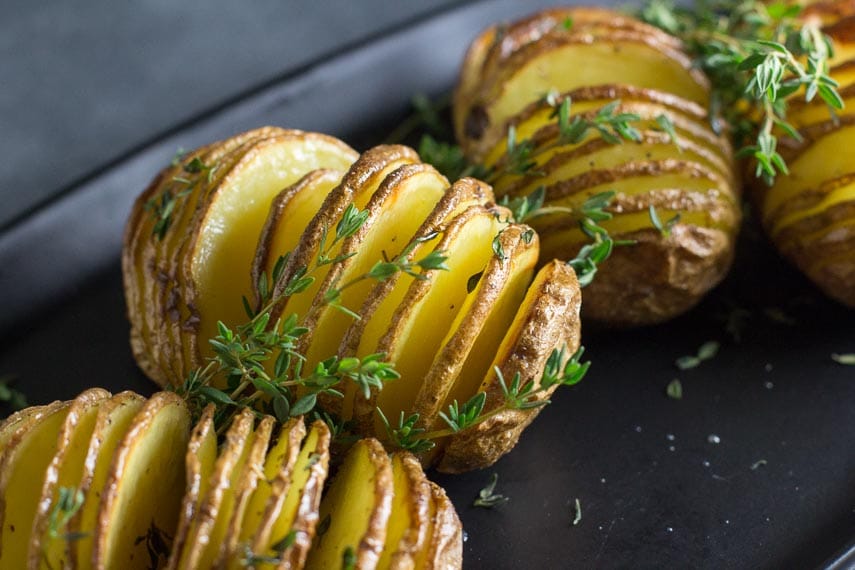
Potatoes! White, red, yellow, starchy russet, sweet potatoes – even blue and purple potatoes – can be a main meal in the form of double stuffed baked potatoes, a weekday side-dish, a potluck salad, or they can add richness to soups. And don’t forget breakfast casseroles and home fries! We have 23 recipes for you to try and potatoes are often economical, too, so dive in! Click here for 23 Easy Potato Recipes: Which One Will You Try First?
Holy Cow! These 10 Ground Beef Recipes Will Knock Your Socks Off!
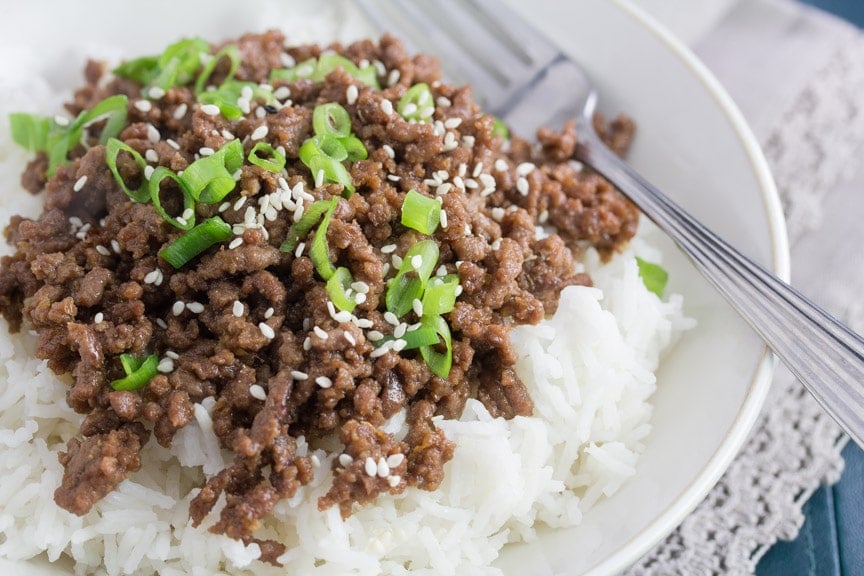
Ground beef makes a great burger and meatloaf, but it is so much more versatile than that, and we have 11 recipes for you to add to your weekly rotation. Chili, Chili Mac and even a Quick Korean Beef dish, that package of ground beef has never been more inspiring. Click here for Holy Cow! These 10 Ground Beef Recipes Will Knock Your Socks Off!
10 Gut Friendly Chicken Recipes You Can Have On Your Table Tonight!
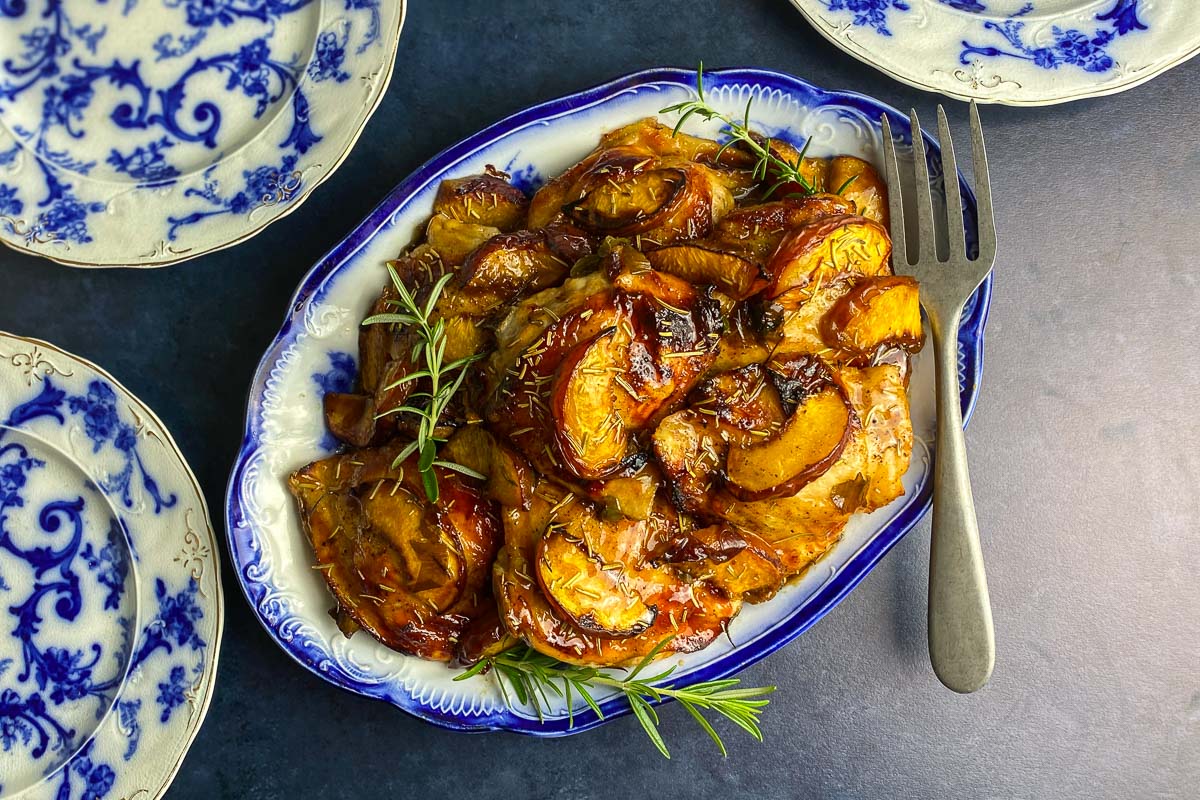
Chicken is one of our favorite protein building blocks for an easy, delicious meal. Sometimes you can get in a rut though and end up making the same chicken recipes over and over.
We’ve got one pan meals, warm weather salads and grill options, dinner party worthy dishes, lighter fare and hearty dinners. Click here for 10 Gut Friendly Chicken Recipes You Can Have On Your Table Tonight!
Looking For More Delicious Ideas?
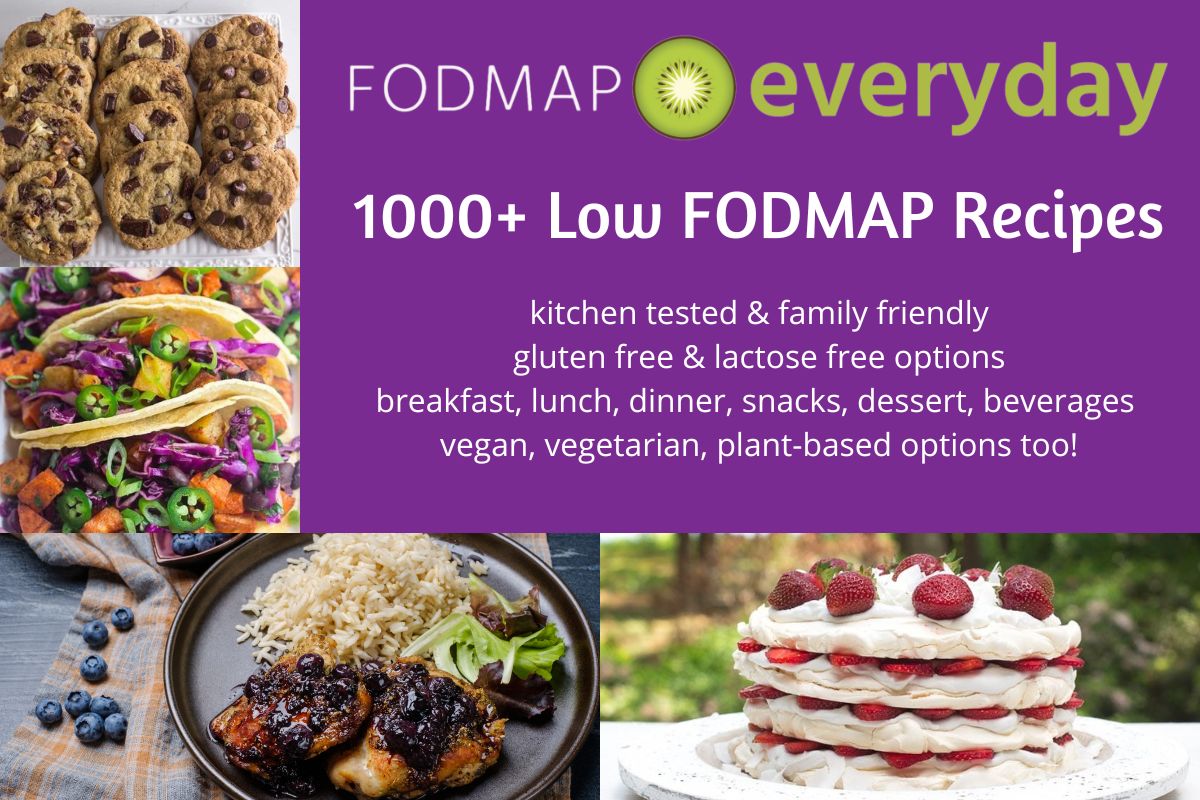
If you have been diagnosed with IBS and are following a Low FODMAP diet, we have 1000+ Gluten Free & Low FODMAP Recipes to help you live deliciously and symptom free!
And Don’t Miss These Articles If You Have IBS
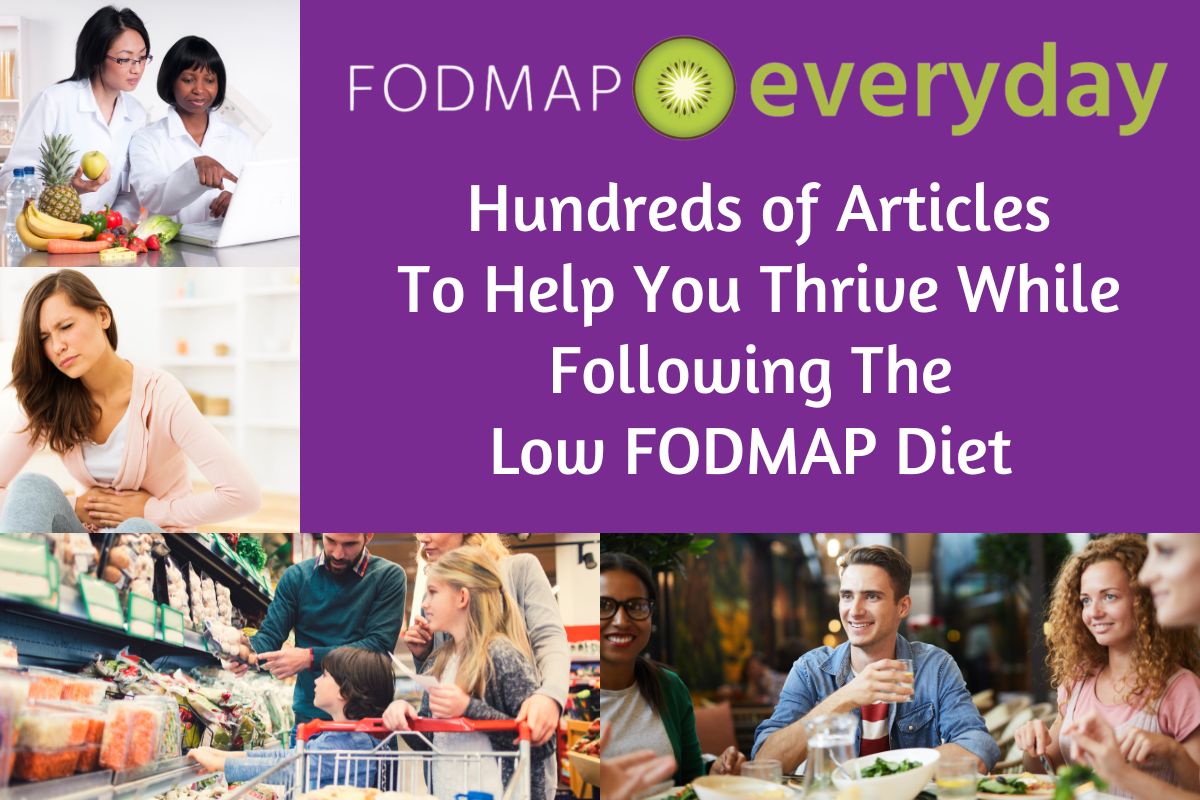
Our team of low FODMAP and IBS trained dietitians and healthcare experts have written 100’s of Wellness Articles to help you THRIVE.
And Be Sure To Visit Our Shop!
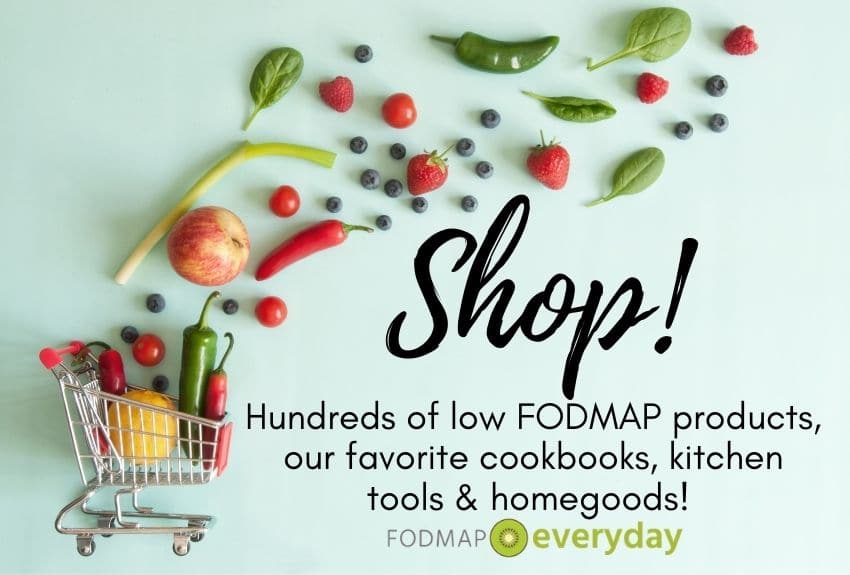
We have curated hundreds products to help you live your best life all in Our Shop!
